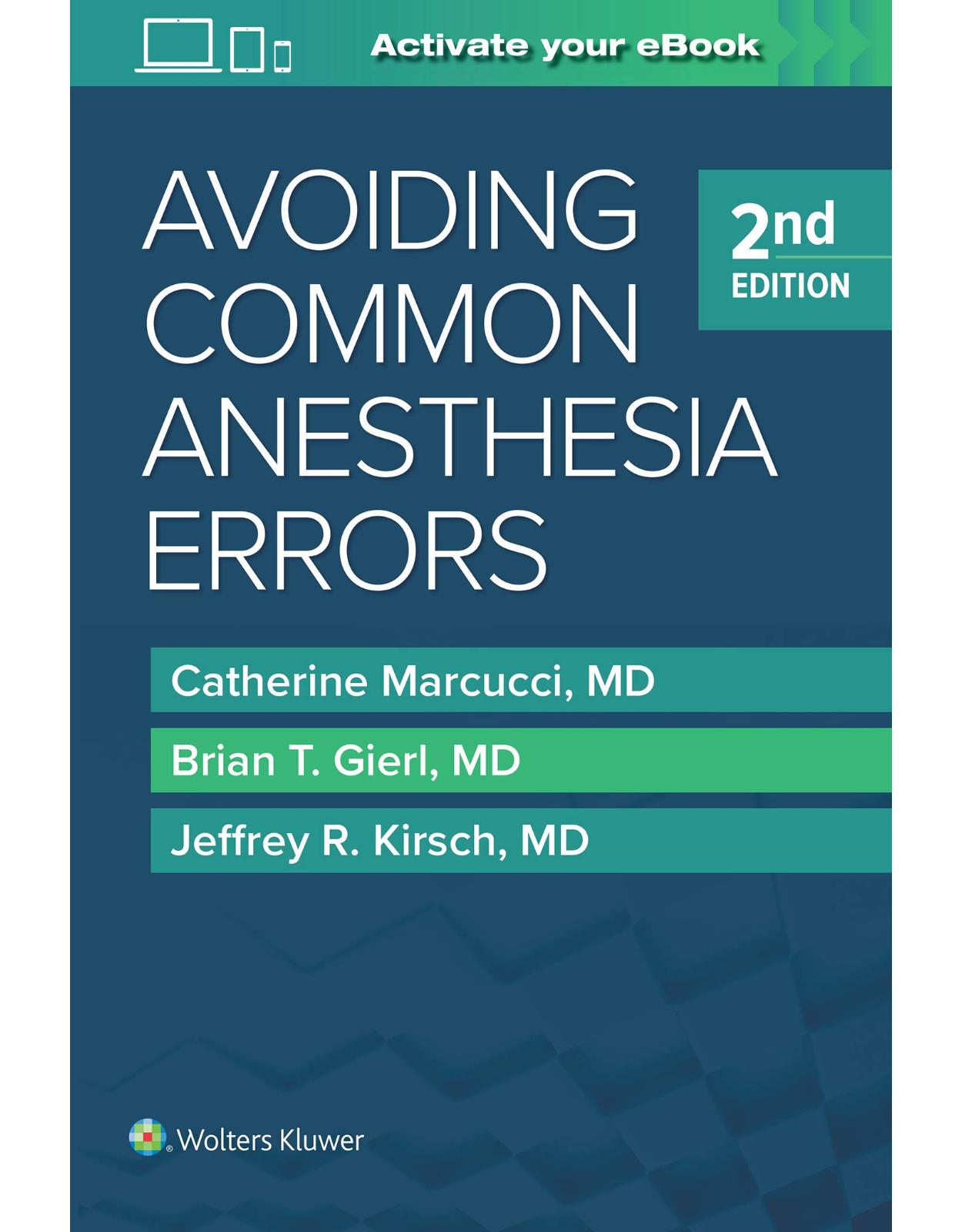
Avoiding Common Anesthesia Errors
Livrare gratis la comenzi peste 500 RON. Pentru celelalte comenzi livrarea este 20 RON.
Disponibilitate: La comanda in aproximativ 4 saptamani
Editura: LWW
Limba: Engleza
Nr. pagini: 1152
Coperta: Paperback
Dimensiuni: 15.24 x 3.3 x 22.86 cm
An aparitie: 1 Oct. 2019
Description:
The full-color Avoiding Common Anesthesia Errors, significantly updated for this second edition, combines patient safety information and evidence-based guidance for over 300 commonly encountered clinical situations. With a format that suggests conversations between an attending and a trainee, the book helps you identify potential problems and develop a treatment plan to minimize the problem. Brief, easy-to-read chapters cover basic and advanced topics and help you digest information in minutes!
Table of Contents:
VENTILATION AND AIRWAY
1 Introduction
2 Basics of Airway Management (Part I)—Always Keep in Mind Complications That Can Occur With Existing Endotracheal Tubes and Tracheal Extubation
Inability to Ventilate due to Endotracheal Tube Occlusion
Avoiding Unexpected Loss of the Airway in Already Intubated Patients
Anticipate Potential Difficulties and Be Prepared to Treat Airway Failure After Extubation
Preparing for Safe Tracheal Extubation
Avoiding Complications of Premature Extubation
Exchanging a Double-Lumen ETT With a Single-Lumen ETT
3 Basics of Airway Management—Part II (More Tips and Tidbits to Read on the Train)
4 Optimize the Airway: Bag–Mask Ventilation
5 Optimize the Airway: Direct Laryngoscopy
Basic Principles
Direct Laryngoscopy Techniques
Placing the Endotracheal Tube
6 Oxygen Is a Drug
Administration
Volume of Distribution
Pharmacodynamics
Circulatory Effects
Pulmonary Effects
Medical Use
Side Effects and Risks
7 Advantages and Disadvantages of the Laryngeal Mask Airway (LMA)
Introduction
8 Avoiding Challenges With Video Laryngoscopy
When Should I Do an Awake Intubation Instead of VL?
Should VL Replace DL?
Overcoming Difficult Tube Placement With VL
Avoiding Soft Tissue Injury With VL
9 Do Not Overinflate the Cuff of the Endotracheal Tube
10 Consider the Use of Lidocaine in the Cuff of the Endotracheal Tube, but Be Aware of the Risks and Alternatives
Intracuff Lidocaine
Alternatives
11 An Easy Intubation Does Not Guarantee an Easy Reintubation—Especially After a Carotid Endarterectomy or Cervical Spine Surgery
Edema/Hematoma
Cerebrospinal Fluid Leak
Recurrent Laryngeal Nerve Injury
Carotid Body Dysfunction
Cervical Misalignment
Surgical Dressings
12 Plan for an Airway Fire With Every Head and Neck Case
Introduction
Fire Triad
Procedures With Increased Risk for Fire
Surgical Fire
Communication and Prevention
Management of OR Fires
13 There Are Special Considerations Involved With Both Intubation and Chronic Airway Management of Burn Patients
Acute Management
Chronic Management
14 To PEEP or Not to PEEP—That Is the Question
Definitions
Physiologic Effects
Respiratory
Cardiac
Central Nervous System
Renal
Hepatic
Indications
Prevention of Atelectasis
ALI/ARDS
Cardiogenic Pulmonary Edema
Contraindications
Treatment of Auto-PEEP
Ongoing Debate
15 This Is No Time for Wishful Thinking: Always Troubleshoot an Increase in Peak Airway Pressure
Consequences of Elevated Ventilatory Pressure
Airway/Ventilation Equipment Problems
Patient-Related Problems
Cough/Light Anesthesia
Bronchospasm/Wheezing
Mechanical Airway Obstruction
Positioning/Surgical Factors
Decreased Pulmonary and Chest Wall Compliance
Acute Decreases in Lung Parenchymal Volume
Auto-PEEP
Conclusion
16 The Key to the Smooth and Skilled Placement and Use of Double-Lumen Endotracheal Tubes Is to Take It One Step at a Time
Introduction
Sizing of Double-Lumen Endotracheal Tubes
Placement of Double-Lumen Endotracheal Tubes
Bronchial Cuff Inflation
Mechanical Ventilation
Hypoxia During One-Lung Ventilation
17 Avoid Common Airway and Ventilation Errors in Morbidly Obese Patients
Introduction
Obstructive Sleep Apnea
Associated Conditions
Physiologic Alterations
Establishing the Airway
Ventilation After the Airway is Established
Hazards of Tracheal Extubation
18 Anesthesia for Awake Intubations
Innervation
Anesthetization of the Airway
Nasal Cavity/Nasopharynx
Oral Cavity/Oropharynx
Hypopharynx
Larynx
Vocal Cords and Trachea
19 Awake Intubations–Being Able to Do Them Comfortably and Safely for the Patient Is the Benchmark for the Airway Expert
Indications for Awake Intubation
Nasal Versus Oral
Techniques
Fiber-optic Intubation
Blind Nasal or Oral Lightwand
Awake Laryngoscopy
20 Airway Management in the ICU, Including the Dreaded Leaking Cuff—How to Bring Your Best Game
Introduction
General Principles
Issue: “The Endotracheal Tube Cuff Is Leaking, and I Can’t Ventilate My Patient!”
Issue: “I Need to Change the ETT or Extubate This Patient, but I’m Concerned About a Difficult Reintubation.”
Issue: “My Patient’s Tracheostomy Device Is Dislodged.”
Summary
21 Ludwig’s Angina
22 Jet Ventilation—How to Adequately Handle This Exotic Ventilation Technique and Earn the Admiration of Your Spectators
Accepted Indications for JV
Insufficient Oxygenation
Insufficient Carbon Dioxide Elimination
Increasing Airway Pressure
JET Gas Conditioning
23 High-Frequency Jet Ventilation—The View From Philadelphia
Physical Principles
Clinical Use and Principles
CO2 Monitoring
Other Clinical Considerations
24 Know How to Perform a Cricothyroidotomy
25 Don’t Make the Mistake of Thinking That a Tracheostomy Is a Guaranteed Airway
Tracheal Tube Obstruction
Foreign Body in Tracheal Tube or Airway
Loss of Airway With Tracheostomy Tube Removal
Hemorrhage
Chronic Complications
26 Helium for the Compromised Airway—You Have to Understand the Principles and Properties but We’ve Seen Some Amazing Saves
Physical Properties of Helium
Heliox
Physics of Fluid Flow With Heliox
Administration
Possible Clinical Applications
For Upper-Airway Obstruction and Stridor
For Croup and Bronchiolitis
For Asthma Exacerbation
For Severe COPD
New Avenues in Clinical Helium Use
Risks of Heliox Use
LINES AND ACCESS
27 Introduction
28 Remember That the IV Start Is Your First Chance to Make a Favorable Impression on the Patient
29 Never Use an Intravenous Line Without Palpating and Inspecting It Visually
Perioperative IV Fluid Concerns
Intraoperative Monitoring
Consequences
Treatment Options
Conclusions
30 Intraosseous Access
Needle Types
Insertion Sites
Complications of IO Needle Placement
31 Central Line Placement: Never Neglect the Basics
32 Avoid Technique-Related Central Venous Catheter Complications by Using Modern Tools
33 Pulmonary Artery Catheters—Still Relevant and Still Worthy of a Cautious Approach
How PAC Technology Works
Placement and Risk
Errors of Management
Errors of Interpretation
Alternative or Supplemental Techniques
34 Don’t Overflush Lines
35 Inadvertent Intra-Arterial Injection Can Result in Severe Patient Injury
Risk Factors for IA Injection
Signs and Symptoms of Arterial Cannulation
Pathophysiology
Treatment Options
Prevention of IA Injection
36 Do Not Use the Subclavian Vein for Central Access of Any Type in a Patient Who Is On or Planned for Dialysis
37 Consult the Surgeons Immediately if Your Patient Loses a Patent Hemodialysis Fistula—This Is a Serious Complication for the Patient
Hemodialysis Fistulas
AVF Failure
Treatment of AVF Thrombosis
FLUIDS AND RESUSCITATION
38 Introduction
39 Crystalloid Fluids: More Than Just a Dash of Salt
The Evidence
The Practice
40 Hypertonic Saline: Still the “Solution” to the Solution Problem?
41 Synthetic Colloid Solutions Have Distinct Properties and Risk/Benefit Ratios That Require Your Attention!
42 Do Not Use CVP to Guide Fluid Resuscitation
TRANSFUSION MEDICINE
43 Introduction
44 Know What Screening Tests Are Performed on Volunteer Donor Blood
Queries and Questionnaire
Serum Screening
Platelets
Blood Type and Antigen Testing
Understanding and Managing the Patient’s Anxiety
45 Red Blood Cell Primer
Washing (Please see Chapter 53 on Washed Products for More Detail)
Irradiation
Leukoreduction
Infectious Complications of pRBCs
Noninfectious Complications (Other Than Transfusion Reactions)
46 Type and Screen or Type and Cross-Match?
Type and Screen
Cross-Matching
Optimizing Perioperative Blood Ordering
47 Special Circumstances: Patients With Antibodies
48 Plasma—It’s Not Just to Fix an Abnormal INR
Plasma Use
Thromboelastography and ROTEM
Massive Transfusion Protocols
MTP Controversies and Issues
Are Guidelines Effective?
Types of Plasma Products
Plasma Dosing
Alternatives to Plasma
Summary
49 Plasma Part II: Is This Plasma or Pea Soup?
50 Remember That the “Universal” Donor Is Different for Red Cell and Plasma Products
51 Platelets—Often a Mystery!
52 Cryoprecipitate—The Most Misunderstood Product in the Blood Bank
Uses of Cryoprecipitate
Inappropriate Uses of Cryoprecipitate
Dosing of Cryoprecipitate
53 Washed Blood Products Are a Source of Confusion—Here’s Some Help
54 This TEG Tracing Looks Like a Rorschach Blot … Is It Time for a Transfusapalooza?
Introduction
TEG Sample Processing
TEG Parameters
TEG Tracing Patterns and Weaknesses
55 Transfusion Reactions
Treatment of Transfusion Reactions
56 Transfusion Outcomes
Varied Practice—Transfusion Triggers pRBC
Why Decrease Transfusion?
Risk of Nosocomial Infection
Cancer Recurrence
Cardiovascular Effects
Red Cell Alloimmunization
Plasma
Platelets
All Blood Products
Increase in Length of Stay
Increased Costs
Declining Donor Supply
57 Directed Donation Is Generally Not a Good Idea
Blood Safety
58 Not All Acute Lung Injury After a Transfusion Is Transfusion-Related Acute Lung Injury
59 Jehovah’s Witnesses and Bloodless Medicine
Preoperative Strategies for a Bloodless Perioperative Clinical Course
Intraoperative Strategies for a Bloodless Perioperative Clinical Course
Anesthesiology Techniques
Surgical Techniques
Postoperative Strategies for a Bloodless Perioperative Clinical Course
60 The Ethics of Jehovah’s Witnesses and Transfusion
Management Strategies for Jehovah’s Witness Patients—The Basic Three-Part Approach
MEDICATIONS
61 Introduction
62 What Just Happened! What You Need to Know About Medication Errors
Introduction
Are Medication Errors a Problem in Anesthesia?
How Common Are Medication Errors in Anesthesia?
How Do We Identify Our Drugs?
What Is the Proper Technique to Draw Up and Administer a Drug?
What Medication Issues Predispose to Medication Errors?
What Environmental and Practitioner Issues Predispose to Medication Errors?
Types of Errors
ASA Closed Claims
How Can We Reduce the Incidence of Medication Errors?
Conclusion
63 Make Sure You Understand the Complex Medical and Legal Issues Surrounding Off-Label Drug Use
64 Perioperative Beta-Blocker Therapy for High-Risk Patients Having Noncardiac Surgery—New Data, New Recommendations
Perioperative Studies
More Recent Studies
Task Force Guidelines
65 Should I Withhold or Continue Angiotensin Receptor Blockers in the Perioperative Period?
Indications
Perioperative Guideline
Should Therapy Be Continued Uninterrupted in the Perioperative Period?
Timing of Last Dose
66 Stop Metformin Before Elective Surgery or Intravascular Contrast Dye Study to Decrease the Risk of Lactic Acidosis
Lactic Acidosis
Guidelines
67 Should I Administer Steroids in the Perioperative Period?
Hyperglycemia
Wound Healing and Infection
Steroid Withdrawal
Other Complications
68 Beware of the Bowel Prep
69 What Drugs Require Slow Administration?
Phenytoin (Dilantin)
Protamine
Vancomycin
Potassium
Clindamycin
Thymoglobulin
Furosemide (Lasix)
Gentamicin
Oxytocin (Pitocin)
Dexamethasone
Lysine Analogs
Other Pearls to Avoid Common Errors Involving IV Administration in the Operating Room
70 Ketamine—Use It Well
71 TIVA—What You Need to Understand to Do It Well
Pharmacokinetics
Time to Peak Effect
Redistribution
Elimination
Pharmacodynamics
Infusion Systems
72 Dexmedetomidine: Is There Such a Thing as a Free Lunch?
What is Dexmedetomidine?
How Does Dexmedetomidine Work?
Potential Benefits of Dexmedetomidine
Complications/Contraindications
FDA-Approved Uses
How to Administer Dexmedetomidine
Clinical Applications of Dexmedetomidine
Clinical Controversy
73 Consider Chloroprocaine in Emergency Situations—It Is a Rapid-Onset Local Anesthetic With Low Systemic Toxicity
Chemical Structure
Clinical Pharmacology
Toxicity Controversy
Clinical Use
74 Use Bicarbonate as a Buffer to Local Anesthetics—Especially for Skin Infiltration
Buffering Local Anesthetics to Decrease Onset Time
Buffering Local Anesthetics to Decrease Pain on Injection
Stability of Buffered Lidocaine
How to Prepare Buffered Lidocaine for Skin Infiltration
75 The Hows, Whys, Ins, and Outs of Succinylcholine or Succinylcholine—Still a Useful Anesthesia Adjunct
Introduction
Neuromuscular Blockers Broken Down
The Neuromuscular Junction and Skeletal Muscle Contraction
Succinylcholine—Mechanism of Action
Indications for Succinylcholine
Cardiovascular Effects of Succinylcholine
Musculoskeletal Effects of Succinylcholine
Hyperkalemia and Succinylcholine
Muscular Dystrophies and Succinylcholine
Malignant Hyperthermia and Succinylcholine
Myopathies and Succinylcholine
76 Don’t Get Burned by Incomplete Reversal of Neuromuscular Blockade
Introduction
How Do Nondepolarizing Muscle Relaxants Work?
How Do We Monitor Neuromuscular Blockade During Surgery?
How Do We Reverse Neuromuscular Blockade?
How Do We Define Adequate Recovery From Neuromuscular Blockade?
What Is the Incidence of Inadequate Reversal?
What Are the Clinical Implications of Incomplete Reversal?
Which Groups Have Higher Risk of Incomplete Reversal?
More About Neuromuscular Monitoring
What About Clinical Assessment of Neuromuscular Blockade?
Let’s Talk About Neostigmine—the Old Standard
A Neostigmine Dosing Strategy
Let’s Talk About Sugammadex—the New Kid on the Block
Sugammadex Issues
A Sugammadex Dosing Strategy
Putting It All Together—How to Avoid Postoperative Residual Block
77 Opioid Conversions—It’s Not Only About the Table
Opioid Conversions in Perioperative Setting
Making Conversions Easy
Opioid Conversions From Intravenous to Oral Form
78 Not All Patients Are Naive—Management of Perioperative Pain in Opioid-Dependent Patients
Preoperative Evaluation
Anesthetic Management
Postoperative Pain Management
What About Patients on Maintenance Therapy?
What About Patients Previously Opioid-Dependent or Addicted?
79 The Basal Infusion Mode in Patient-Controlled Analgesia Is Both Friend and Foe
80 Keep Discussing the Use of Ketorolac (Toradol) With Your Surgical Team Before the Need Arises and Keep Your Eye on the Literature
Basic Pharmacology
Indications and Use
Postoperative Pain
Intravascular Regional Anesthesia (Bier Block)
Periarticular Injection “Cocktail”
Complications and Issues
81 Special Topic I: Do Patient With Congenital Insensitivity to Pain Need Anesthetics and Postoperative Opioids?
Hereditary Sensory and Autonomic Neuropathy
Classification of Congenital Hyposensitivity to Pain
Anesthesia and Hereditary Sensory and Autonomic Neuropathy Disorders
Perioperative Management of Body Temperature
Perioperative Prevention of Aspiration
82 Special Topic II: Can Your Patients Eat Their Way Out of Chronic Pain? Some Common Sense Advice
83 Attacking Acute Perioperative Hypertension— The Cleveland Group Shares Their Battle Plan
Pharmacologic Acute Hypertension Management Tools—The Sharp End of the Stick
The Downers (aka Vasodilators)—The Ideal Drug
Calcium Channel Blockers—But Not Just Any Calcium Channel Blocker
Calcium Channel Blockers—Dihydropyridine L-type
Nitrovasodilators (aka Nitric Oxide Donors)
Beta- and Alpha-Antagonists
Alpha-2 Agonist
Oddball IV Antihypertensives
84 Cardiovascular Vasoactive Drugs That Pump You Up
Phenylephrine—Straight Up Alpha-1 Agonist
Ephedrine—Indirect Acting at Beta-1 Receptors Through Release of Norepinephrine
Dopamine—Dopamine Receptor Agonist and Beyond
Dobutamine—Beta-1 Receptor Agonist
Time to Change Gears…
Norepinephrine (Levophed, aka Leave ‘em Dead) Mixed Alpha-1>>Beta-1 Agonist
Epinephrine—Mixed Alpha-1 <Beta-1 and -2 Agonist
Vasopressin (aka Antidiuretic Hormone, Arginine Vasopressin, or Argipressin)
Methylene Blue (Why Is My Pee GREEN?)
85 Milrinone—The Not-So-Kidney-Friendly Intraaortic Balloon Pump in a Bottle
The 30,000 Foot View of Clinical Milrinone Use
Milrinone: Mechanism of Action
Milrinone: Indications
Milrinone: Dosing
Milrinone: Cautions In Use
86 Amiodarone and Alternative Antiarrhythmics— Double-Edge Swords for the Treatment of Atrial and Ventricular Fibrillation
30,000 Foot View of Amiodarone and Alternative Antiarrhythmic Agents
The Basics of AFIB and Amiodarone
Drug–Drug Interactions (DDIs) Involving Amiodarone
Summary
87 Ondansetron Is a Great Drug, We ALL Use It, But Watch for Headache and QT Prolongation
Serotonin Pharmacology and the Antiemetic Effect
Other Indications
Overall Safety Profile
Headache
ECG Effects—QTc Prolongation
88 A Word About Haloperidol in the Perioperative Period
Basic Pharmacology and Pharmacokinetics
Risks and Side Effects
Pharmacokinetics
Haloperidol Clinical Pearls for the Anesthesiologist
89 Remember That Not All Blue-Colored Compounds Are the Same
Methylene Blue
Patent Blue
Isosulfan Blue
Indigo Carmine
Indocyanine Green
FDA Public Health Advisory!
90 Clonidine Considerations
Chemical Properties/Pharmacology
Physiologic Effects
Dosing/Duration of Action
Antihypertensive and Cardiovascular Effects
Sedation/Reduction in Anesthetic Requirements
Analgesia
Other Uses
Side Effects/Contraindications
91 A Primer on the Psych Syndromes: Serotonin Syndrome Versus Neuroleptic Malignant Syndrome
Serotonin Syndrome
Neuroleptic Malignant Syndrome
Serotonin Syndrome and Other Perioperative Drugs
Hunter Serotonin Toxicity Criteria
Neuroleptic Malignant Syndrome in the Perioperative Period
So—What Is the Exact Mechanism for Neuroleptic Malignant Syndrome and Is It Related to Malignant Hyperthermia in Any Way?
92 Drug-Drug Interactions Are Now Necessary Knowledge for the Anesthesia Provider and We Can Help
93 The Six Patterns of Cytochrome P450 Drug-Drug Interactions Relevant to the Perioperative Clinician
Pattern 1: An Inhibitor Is Added to a Substrate
Pattern 2: A Substrate Is Added to an Inhibitor
Pattern 3: An Inducer Is Added to a Substrate
Pattern 4: A Substrate Is Added to an Inducer
Pattern 5: Reversal of Inhibition
Pattern 6: Reversal of Induction
Remember That These Clinical Effects Are Reversed If the Substrate Is a Prodrug!
94 Don’t Spend Time Rereading Tom Clancy Novels Until You Have Mastered These Basic Drug-Drug Interactions
Summary of Cytochrome P450 Metabolism of Intraoperative Drugs
95 Drug-Drug Interactions and the P-glycoprotein Pump—Be Vigilant With Patients on Digoxin
Physiology of the Transporter
Substrates and Inhibitors of the P-glycoprotein Transporter
Inducers of the P-glycoprotein Transporter
96 Can You Name Six Perioperative Drug-Drug Interactions That Involve Oral Contraceptives? Okay, You Can Now!
Oral Contraceptives
97 Wish We Knew Then What We Know Now— A Case of Serotonin Syndrome in the Operating Room
Metabolism of Selective Serotonin Reuptake Inhibitor
Beware of Methylene Blue Pharmacologic Action
Drug-to-Drug Interaction: Methylene Blue and SSRI
EQUIPMENT
98 Introduction
99 Pulse Oximetry: Perhaps You Need a Refresher?
Accuracy
Limitations: Signal Artifacts and Optical Interference
Clinical Application
100 The End-Tidal CO2 Monitor Is More Than Just a Device to Tell You That “the Tube in the Airway”
Review of Capnography
Capnometry Versus Capnography
Normal Capnogram
Factors Influencing Alveolar Dead Space
Decreased Capnogram
Increases in ETCO2 Level
Effect of PEEP
Bronchospasm
Negative Arterial–End-Tidal Gradient
Alterations in Inspiratory CO2
Other Variations in Waveform
Monitoring Moderate or Deep Sedation
101 Noninvasive Blood Pressure Management— It’s Not Just a Piece of Nylon Around the Arm
Oscillometry
Proper Use
Errors of Measurement
Complications
102 Avoid Errors in Invasive Blood Pressure Measurement
103 How, Why, and When to Use Brain Function Monitors
What Is a “Depth of Anesthesia” Brain Function Monitor?
What Are the Benefits and Limitations?
What Do Current Guidelines Say?
Our Personal Practice
The Future?
104 Do Not Improvise Techniques to Warm Patients—Use Warming Devices Only as Per Manufacturers’ Recommendations
Complications of Hypothermia
The Pathophysiology and Physics of Hypothermia
Preventing Hypothermia
Preventing Patient Injury While Preventing Hypothermia
105 Transesophageal Echocardiography: Contraindications, Complications, and Misinterpretations
Probe Placement
Image Interpretation
Normal Anatomic Variants
106 Scavenging Waste Gases Is Perhaps the Only Action We Take That Benefits Us but Not the Patient
Chronic Exposure to Waste Gases
Scavenging Systems
Avoiding Mishaps
107 Carbon Dioxide Absorbers Save Gas and Moisture but Create the Potential for Mechanical Hazards, Chemical Soup, or a Thermal Disaster
Basic Management of Absorbers
Mechanical Complications
Adverse Chemical Reactions
108 Infusion Pumps: Get Them Going and Keep Them Going!
Gravity
Infusion Pumps
Syringe Pumps
Common Principles and Current Considerations
109 Don’t Bring the Fiberoptic Scope Into the MRI Scanner!
Metals and MRI
Anesthesia Equipment
Airway and Emergency Management
110 Understanding the Operating Room Circuit and the Line Isolation Monitor—It’s Really Pretty Simple
Basic Electrical Terminology
Grounded Power Systems
Isolated Power Systems
Conversion of an Isolated Power System to a Grounded System
Line Isolation Monitor
111 Cell Phones in the Operating Room—Here Are the Issues
Mechanisms of Electromagnetic Interference
Effects of Electromagnetic Interference on Medical Devices
Risk of Electromagnetic Interference
Regulation and Standardization
112 Don’t Let the Tourniquet Cause Extra Pain or Complications
Muscle
Nerves
Cardiovascular Considerations
Hematologic Complications
Pharmacokinetics
PERIOPERATIVE
113 Introduction
114 Hurdles of the Electronic Health Record
115 Hand Hygiene! History, Human Factors, and Helping Your Patients
Summary
116 Remember That the Same Simple Mistakes at Induction (and Emergence) Happen Over and Over Again!
Induction
Emergence
117 Smoking Cessation Part I—ANYTIME Is a Good Time to Quit
Smoking Increases Perioperative Complications
Any Time Is a Good Time for Stopping Smoking
How Could Anesthesiologists Help in Smoking Cessation?
118 Smoking Cessation Part 2—So Good for the Patient as Long as You Understand the Effects on CYP1A2 Drug Metabolism (Especially R-Warfarin)
119 Flying to the Mayo Clinic for Surgery? The Clot Thickens
120 Don’t Let Your Understanding of the Utility of Preoperative Stress Testing in Suspected Heart Disease Lapse
121 A Positive Troponin Does Not Always Mean a Myocardial Infarction—Will the New High-Sensitive Assays Help Sort It Out?
Troponin Assays
Renal Failure
Other Disease States
Clinical Context—Cardiac Troponin Versus High-Sensitive Cardiac Troponin
122 Preoperative Anxiolysis: It’s Not Just “Two of Midaz”
Recent History
Basic Principles
Patient Concerns
Pharmacologic Interventions
Nonpharmacologic Interventions
Acupuncture
Summary
123 Schizophrenia Is a Devastating Mental and Medical Illness—and These Patients Have Significantly Greater Perioperative Risks Than Age-Matched Controls
Preoperative Risk Factors and Evaluation
Intraoperative Management
Postoperative Risk Factors and Management
Antipsychotic Drugs
124 What to Do About the Tattoos and Body Jewelry
Tattoos
Piercings and Jewelry
125 We Now Know That Obstructive Sleep Apnea Is More Common Than We Thought—Manage These Patients Carefully and Conservatively
Epidemiology
Risk Factors
Pathology
Diagnosis
Treatment
Outcome
Implications for Anesthesia
Preoperative Evaluation
Intraoperative Management
Postoperative Care
Discharge Criteria
Outpatient Surgery
OSA Characteristics for Children
126 Don’t be Shy About Borrowing ICU Equipment, Medications, and Personnel for the Critically Ill Patient Going to the Operating Room
Pulmonary Arterial Vasodilators
Antibiotics and Immunosuppressive Agents
Temporary Pacemakers
ICU Ventilator
ICU Personnel
Respiratory Therapist
Ventricular Assist Device Coordinator
Lung De-recruitment
127 The Dao of Positioning
The Problem
The Lessons
128 The Supine Position—Complications Can Still Arise!
General Considerations for Patient Positioning
Positioning Checklist
Complications Related to Physiologic Changes
Respiratory
Cardiovascular
Specific Complications
Peripheral Nerves
Ulnar Nerve
Brachial Plexus
Head
Skin
Eyes
129 Thinking Laterally—How to Safely Position a Patient in the “Sideways” Position for Surgery
130 Positioning Patients for Spine Surgery
131 Sit Back and Relax? Implications of the Sitting Position in Shoulder and Brain Surgery
132 Individuals With Cerebral Palsy and Other Spastic Disorders Need Your Best Positioning Prowess
133 Use Extra Care in Positioning Patients Who Have Had Amputations
134 Never, Ever Fire
Risk Assessment
Preventative Measures
Management of the Surgical Fire
Race to Fire Safety
Postsurgical Fire Management
135 Malignant Hyperthermia: If You Get to the Point Where You See an Elevated Temperature, It’s Already Happening
Treatment of Acute MH
Treatment of Postacute MH
What to Stock in the Malignant Hyperthermia Cart
Drugs
General Equipment
Monitoring Equipment
Nursing Supplies
Laboratory Testing Supplies
Forms
Preparing the Anesthesia Machine for MH-Susceptible Patients
Contact Information
136 Good Old-Fashioned Basic Perioperative Blood Pressure Control
Blood Pressure Control in the 21st Century
It’s a Big World but Here is BP Management That Should Work for Everyone
137 Some Additional Thoughts on Blood Pressure Management Techniques—What We Believe, How We Do It, and Where We Think the Science Is Going
138 Protect the Kidneys, Not the “UOP”
139 Avoid a 70% Mortality Rate: Do Everything You Can to Prevent Perioperative Renal Failure
140 Do Not Use Urine Output as an Indicator of Volume Status in Hypothermic Patients
141 Perioperative Hyperglycemia Is Associated With Poorer Clinical Outcomes so Consider Insulin Therapy for Both Diabetic and Nondiabetic Patients With Elevated Blood Glucose
142 Seven Ways to Treat Hyperkalemia in the Perioperative Period
Pathogenesis of Hyperkalemia
Treatment of Hyperkalemia
Calcium
Insulin and Glucose
Sodium Bicarbonate
Beta-Adrenergic Agonists
Loop or Thiazide Diuretics
Cation-Exchange Resin
Dialysis
Blood Products
143 Laparoscopic Procedures: Managing the Risks and Physiologic Effects During Camera Placement, CO2 Insufflation, and Vertical Positioning
Cardiovascular Effects
Intracranial Effects
Pulmonary Effects
Soft Tissue Effects
144 Could This Be Methemoglobinemia, Maybe?
Methemoglobinemia
Methemoglobin Formation and Reduction
Causes of Methemoglobinemia
Signs and Symptoms
Diagnosis
Treatment
145 The Eye Room—Is It the Easiest of Days? Or the Hardest of Days? Regardless, Vigilance Is Key!
Managing Expectations
Types of Anesthesia
Topical
Regional Blocks
General Anesthetics
Postoperative Course
Vigilance
Other Considerations for Eye Surgery
146 My Eye Hurts! Prevention, Diagnosis, and Treatment of Corneal Injuries After Anesthesia
Introduction
Mechanisms of Injury
Incidence
Risk Factors
Prevention of Corneal Injury
Corneal Lubrication Options
Do You Really Need an Ophthalmology Consult?
Diagnosis
Prognosis and Treatment
Supportive Care
Follow-up
Documentation
What Can My Center Do to Decrease the Incidence of Corneal Injuries?
147 Never Forget That Patient Transport Within the Hospital Is One of the Most Dangerous Intervals in the Perioperative Period
Introduction to Intrahospital Transport (IHT)
Risks Associated With Intrahospital Transport
Neurologic Complications
Pulmonary Complications
Cardiovascular Complications
Other Complications
Avoiding Common Errors: Considerations for Transporting Patients
148 Seek Out Hypercapnia in the PACU and Remember That an Acceptable Pulse Oximeter Reading Is Not Assurance of Adequate Ventilation
149 Let’s Go Over It Again: Avoid Residual Neuromuscular Blockade in the PACU!
How Does Residual Neuromuscular Blockade Manifest and Why Does It Matter?
How Can the Incidence of Residual Paralysis in the PACU Be Reduced?
Judicious Use of Neuromuscular Blocking Drugs
Evaluating for Neuromuscular Blockade
Clinical Tests
Neuromuscular Monitors
Reversal Agents
Conclusion
150 Give the Intensivist the Best Handover to Improve Patient Outcomes
Use Standardized Handover Tools
Prioritize the Handover Process
Assemble the Entire Team
Improve the Handover Process Continually
Pitfalls to Avoid
Summary
151 Don’t Miss Out on Ultrasound—Which ICU Techniques Are Helpful for the Anesthesiologist?
Introduction
Focused Lung Ultrasound
Focused Cardiac Ultrasound
Ultrasound for Difficult Vascular Access
Summary
152 Don’t Overlook the Potential of Perioperative Acupuncture
Acupuncture Training—Licensed Acupuncturists Versus Medical Acupuncturists
Efficacy of Acupuncture in the Perioperative Period
Preoperative Optimization
Postoperative Pain Control
Chronic Pain
Wellness for Providers
Safety
153 Consider Acupuncture as an Adjunct for the Prophylaxis and Treatment of Postoperative Nausea and Vomiting
154 Don’t Warm Up a Cardiac Arrest Patient Unless They Are Dying of Hemorrhage!
How Does Therapeutic Hypothermia Provide Neuroprotection?
Potential Complications of Therapeutic Hypothermia
155 What to Do If You Get a Needlestick Injury
Common Scenarios Associated With Needlestick Injuries
Human Immunodeficiency Virus
Hepatitis B Virus
Hepatitis C Virus
REGIONAL ANESTHESIA
156 Introduction
157 Complications of Regional Anesthesia: Don’t Touch the Needle Before You Know Them
Introduction
Infection
Bleeding
Nerve Damage
Allergic Reactions
Blockade of Other Nerves
Intravascular Injection and Local Anesthetic Toxicity
Supplies and Equipment That Should Be Available When Doing Regional Anesthesia
158 Make Time for a Timeout Before Placing a Block—the Preprocedure Check
Suggested Elements of a Preprocedure Block Checklist
Suggested Script for a Timeout
What Should Happen When the Worst Happens?
159 Chlorhexidine: Killing Bacteria … and Allergic Patients?
Hypersensitivity
Risk Factors
Diagnosis
Management
160 What Is the Correct Brachial Plexus Block to Perform?
Anatomy—The Road Map …
Interscalene Block—Taking the High Road …
Supraclavicular Block—Always Supra, Often Super as Well
Infraclavicular Block–Emerging From the Tunnel
Axillary Block—Taking the Low Road
Those Darn Unblocked Territories
Putting It All Together …
When Should We Avoid or Delay Doing a Block?
161 Getting the Right Ultrasound Image
Picking a Transducer
Ultrasound Controls
Transducer Maneuvers
162 Interscalene Blocks—Preventing the Blues!
Complications
Phrenic Nerve Block
163 The Old-Fashioned “Bier” Block Is Still Relevant—The Trick Is to Not Let the Surgeons Get Ahead of You
Introduction and History
Advantages and Disadvantages
Technique
Agents and Adjuncts
Cautions
Getting Back to Our Case …
164 Remember the Low-Risk/High-Yield Blocks
Superficial Cervical Plexus Block
Femoral Nerve Block
Popliteal Fossa Nerve Block
Ankle Block
165 Preparing to Fail: The Dynamics of a Failed Block
Know Your Anatomy!
What If It Just Doesn’t Work?
Blocks for Postoperative Analgesia
Surgical Blocks
Know Your Dosing
A Note on Catheters
166 Salvage Techniques for Incomplete Upper-Extremity Blocks
Block Failure
Salvage Blocks for the Upper Extremity
Shoulder Surgery
Forearm/Hand Surgery
167 Salvage Blocks for Incomplete Lower Extremity Blocks
Block Failure
Salvage Blocks for the Lower Extremity
Hip Surgery
Knee Surgery
Lower Leg and Foot Surgery
168 More Than a Stick and a Burn: Local Anesthetic Systemic Toxicity
Local Anesthetic Pharmacology
Properties of Commonly Used Local Anesthetics
Risk Factors for LAST
Rate of Systemic Absorption (Fastest to Slowest)
Clinical Presentation of LAST
Signs and Symptoms of Local Anesthetic Toxicity
Prevention of LAST
Treatment and Management of LAST
The Management of LAST
Call for Help and Then Get VOCAL
169 Lipid Rescue—Where Are We Now?
Introduction to LAST
Does This Patient Show Signs of LAST?
Management of LAST
History of Lipid Therapy for LAST
Practical Aspects of Lipid Therapy
How Does Lipid Rescue Work?
Side Effects and Complications
Other Uses for Intralipids
170 A Patient Who Is Planned for Spinal Anesthesia Asks “Can This Paralyze Me?” What Are the Facts and What Do You Say?
Introduction
What Is the Incidence of Injury?
What Are the Potential Causes of Spinal Cord Injury?
Direct Trauma
Compression From Hematoma
Compression From Abscess
Neurotoxic Effects of Neuraxial Drug Delivery
Spinal Cord Ischemia
Predisposing Conditions
So, With All This in Mind, How Do You Answer the Patient’s Question?
171 Spinals in the Lateral Position
Basic Positioning
Understanding the Anatomy
172 Consider the Paramedian Approach for Spinal Anesthesia in the Hip Fracture Patient
173 When Is a Whisper a Cry for Help? When the Patient Has a High Block
Inadvertent Intrathecal Injection
Intravascular Injection
Ultrasound Guidance and Regional Anesthesia
Prevention and Treatment
174 Issues Related to Discharging the Postspinal Patient
Spinal Anesthesia
Complications
Discharge From the PACU
175 Epidural or Truncal Block? Sorting It Out
176 Dang It! Wet Tap
The Differential Diagnosis: Is This a PDPH?
Why Is a “Simple Headache” so Important?
What Causes This Type of Headache?
I Caused a Dural Puncture—Now Who’s Going to Get a Headache?
What Do I Do After an Unintentional Dural Puncture?
Oh No! This Is a PDPH. What Do I Do NOW?
How Do You Perform an Epidural Blood Patch?
177 Consider Continuous Paravertebral Block as Your Primary Analgesic Technique
Considerations
Options
Anatomy of the Paravertebral Space
Technique of CPBV
Multimodal Analgesia: Making the Most of Your Nerve Block
178 Pneumothorax After Paravertebral, Supraclavicular, or Interscalene Block
Avoiding Iatrogenic Pneumothorax
Diagnosing Pneumothorax
Treatment
179 Epidural Anesthesia for Mastectomy
180 What Is the Right Level for Postoperative Epidural Catheter Insertions Based on Type of Surgery?
Location, Location, Location
Before Is Likely Better
Know What You Are Covering—Operative or Postoperative
Landmarks for Placement and Assessment
181 Know the Complications of Epidural Corticosteroid Injections
Neurologic Injury
Infections
Systemic Effects
Arachnoiditis
182 If You Are New to Neuraxial and Peripheral Nerve Block Infusions—a View From Both Academia and Private Practice
Why a Continuous Infusion?
Indications
Contraindications
Neuraxial Infusion of What?
Common Neuraxial Infusion Concentrations
A Peripheral Nerve Block Infusion of What?
Do I Make the Solution Myself?
What Can Go Wrong?
Troubleshooting Continuous Infusions
In Summary
183 What to Do With a Prolonged Block
Talk to the Patient!
Review the Chart
Is It a Nerve Injury?
What Do I Tell the Patient?
184 Regional Anesthesia in the ICU—What Should We Use and When Should We Use It?
Introduction
Specific Considerations of Regional Anesthesia in the ICU
Analgesia and Delirium
Opiates and Cancer
Regional Anesthesia/Analgesia and Sympathetic Tone
Regional Anesthesia/Analgesia and Mechanical Ventilation
Regional Anesthesia/Analgesia in the Septic/Bacteremic Patient
Regional Anesthesia/Analgesia in the Immunocompromised Patient
Regional Anesthesia/Analgesia in the Critically Ill Patient With Impaired Homeostasis
Specific Peripheral Nerve Blocks in the ICU
PEDIATRIC ANESTHESIA
185 Introduction
186 Assent, Consent, and Refusal: Informed Consent and Decision-Making for Adult and Pediatric Patients
Informed Consent
Decision-Making Capacity and Competency
When a Patient Lacks DMC
The Role of the Surrogate
The Consent Process for Minors
Assent, Consent, and Refusal for Pediatric Patients
Resolution and Assistance
187 NPO Guidelines Made Easy—Always Maintain a Firm Hold on Current Principles, Best Practices, and Your Own Common Sense
188 Aspiration and Food Injury—Or When Not to Extubate Deep
Risk Factors
Gastric Volume and pH
Opioids
Nausea and Vomiting
Trauma
Precautions
Time
Cricoid Pressure
Pharmacotherapy
IV Placement Prior to Induction
189 Don’t Underestimate the Power of Distraction During Separation and Induction of Anesthesia in Kids
No Midazolam?
So …. Back to Basics!
Introduction to Distraction Techniques
190 Parental Presence on Induction—It’s Your Call and How to Do It
191 The Child With a URI
192 Accept That You Will Have to Meet the Clinical Challenges of Obesity and Obstructive Sleep Apnea in Your Pediatric Patient Cohort
Definitions and Comorbidities
BMI
Coronary Artery Disease (CAD)
Diabetes Mellitus, Type 2 (DM)
Mental Health
Metabolic Syndrome
Nonalcoholic Fatty Liver Disease (NAFLD)
Obstructive Sleep Apnea (OSA)
Orthopedic Comorbidities
Pseudotumor Cerebri
A Focus on OSA
Diagnosis
Treatment
Perioperative Concerns for Obese Children With and Without OSA
Cardiovascular
Respiratory
Endocrine
Preoperative Considerations
Intraoperative Considerations
Postoperative Concerns
193 Neuromuscular Disease in Kids Can Be Very Challenging Because You Don’t Always Have a Definitive Diagnosis—Here’s How to Approach the Clinical Situations
Muscular Dystrophies
Myotonic Dystrophy
Congenital Myopathies
Mitochondrial Disease
Malignant Hyperthermia
194 Pediatric Patients With Epilepsy: Considerations for Patients on a Ketogenic Diet and for Cortical Mapping
Ketogenic Diet
Cortical Stimulation Mapping
195 Neonates Deserve Perioperative Analgesia, Too
Evaluation of Pain
Know Your High-Risk Populations
Planning Postoperative Analgesia
Drug Therapy for Acute Pain
Patient-Controlled Analgesia for Children
Regional Anesthesia for Postoperative Pain
196 Anesthetic Considerations in Patients With Fontan Physiology Who Present for Noncardiac Surgery
Introduction
Physiology
Evaluation
Intraoperative Management
Complications
197 Anesthesia for Kids and Neurotoxicity: You Are Going to Be Asked, So Don’t Be Surprised and Don’t Act Uninformed
What Is the Big Deal?
Experimental Literature
What About Humans?
What Now?
198 Double Down on Pediatric Airway Equipment
199 Optimizing Bag Mask Ventilation and Direct Laryngoscopy in Children
Key Anatomic Differences Between Children and Adults
Optimizing Bag Mask Ventilation and Mask Fit
Ventilation
Airway Adjuncts
Optimizing Direct Laryngoscopy
Equipment
Positioning
Laryngoscopy
200 Why You Should Expect Hypoxemia During Induction and Emergence of the Pediatric Patient and What to Do About It
Physiology and Anatomy
What Can Go Wrong
How to Avoid These Problems
What to Do When Hypoxemia Occurs
201 Why Air Bubbles and Air Emboli Can Be So Serious in Pediatric Patients and How to Safeguard Your Patients
202 Pediatric Fluid Management
203 Keeping Babies Warm in the Perioperative Period Is Important, Challenging, and at Times Dangerous!
204 Pediatric Arterial Access—And the Beat Goes On
Site Selection
Complications of Arterial Access in Pediatric Patient
205 Pediatric Regional Anesthesia—The Karma of Caudals
Indications
Contraindications
Risk-Benefit Ratio and Parental Consent
Anatomy
Technique
Complications
206 Avoiding the One-Hour Wake Up or How to Save the Sanity of the Parents and Your Own Reputation at the Same Time
207 When Not to Extubate Deep! And if the Patient Is Already Coughing or Swallowing, It’s Too Late Anyway
Advantages
Disadvantages
How to Successfully Perform a Deep Extubation
Contraindications to Deep Extubation
208 Emergence Delirium—Don’t Overcall It, Don’t Undercall It, and Don’t Let It Happen
Diagnosis
Causes
MRI
Treatment
Prevention
209 Too Much, Too Little, Just Right: Avoiding Opioid Withdrawal in Pediatric Patients on Chronic Opioids
Signs and Symptoms of Withdrawal
Basics of the Opioid Wean
Benzodiazepine Dependence
210 Careful and Conservative Clinical Judgment Is Required Before Discharging a Pediatric Patient to Home
211 Chronic Pediatric Pain: There’s Always More Than Enough Pain for Everybody Involved and It’s Not About the Blocks!
Managing Postoperative Pain in Children With Chronic Pain
Preventing Opioid Withdrawal
Avoiding Inadequate Postoperative Pain Management
Avoiding the “Block Is the Cure” Trap
Pediatric Chronic Pain and Peripheral Nerve Blocks
Evaluating a Chronic Pain Patient
Chronic Pain History
Chronic Pain Examination
Management of Chronic Pain in Pediatric Patients
212 “But, It’s Just an Herb!” Avoiding Problems Resulting From Nontraditional Pain Medications in the Pediatric Population
Chronic Pain and Herbal Therapy
Chronic Headaches
Chronic Functional Abdominal Pain
Musculoskeletal Pain
A Quick Note on Herbal Contaminants
Do Herbals Really Cause Adverse Events or Is It All Theoretical?
What About Neuraxial Blocks and Herbal Medications?
Common Pitfalls With Herbal Medications
213 Okay, There Are Herbals, but What About Those “Other Herbals?”
Anesthetic Considerations of Marijuana
214 Pitfalls in Pediatric Sedation
Patient and Procedure
Risks and Preparation
Goals and Plan for Procedural Sedation
Postsedation Discharge Criteria
215 Pitfalls of Pediatric Anesthesia for International Service Missions
Pediatric Anesthesia for International Voluntary Services
Choose Your Adventure Wisely
Know Your Team Members
Find the Right Patients
Equipment Pitfalls
Don’t Forget the Monitors
Use Spontaneous Ventilation
Regional Anesthesia Is Your Friend
Remember a Postoperative Care Plan
216 Pediatric Cardiac Arrest Under Anesthesia—Predicting and Preventing the Most Devastating Event of All
Predictors of Anesthesia-Related Cardiac Arrest in Children
ASA Physical Status
Emergency Surgery
Age
Cardiac Disease
Annual Caseload
Changing Profile of Anesthesia-Related Cardiac Arrest in Children
Causes of Cardiac Arrest
Demographics of Cardiac Arrest
Strategies to Prevent Cardiac Arrest in Anesthetized Children
Specific Measures
General Measures
Conclusion
NEUROANESTHESIA
217 Introduction
218 The Neurophysiology You Learned in Medical School Is Always Relevant—Get a Grip on It and Don’t Let Go
219 Cerebral Aneurysm Versus “Routine” Craniotomy—The Anesthetic Goals Are Not the Same
220 Perioperative Visual Loss Is One of the Most Feared and Devastating Complications of Spine Surgery
221 Being Maximally Prepared for Minimally Invasive Pituitary Surgery
222 Evoked Potentials: Don’t Approach the Surgeon or Neurophysiologist Until You Know These Principles
223 Awake Craniotomy
Introduction
Preoperative Considerations
Intraoperative Management
Intraoperative Complications
Postoperative Care
224 Anesthesia for the Pregnant Patient With Neurosurgical Disorder: These Cases Actually Do Happen in Real Life ….. and on the Oral Boards
Introduction
Physiologic Changes During Pregnancy
Timing and Method of Delivery
Neurosurgical Conditions Requiring Neurosurgical Interventions During Pregnancy
Traumatic Brain Injury (TBI)
Intracranial Tumors
Intracranial Hemorrhage
Back Surgery
Anesthetic Considerations of the Pregnant Patient During Neurosurgery
Preoperative Anesthetic Considerations
Intraoperative Anesthetic Considerations
Postoperative Anesthetic Care
225 Don’t Forget There’s No Such Thing as a Brain Transplant: Preventing Perioperative Stroke
Recognizing At-Risk Patients
Preoperative and Intraoperative Management
General Anesthesia and Regional Techniques
Hemorrhage and Intraoperative Anemia
Hyperglycemia
Intraoperative Hypotension
Postoperative Assessment and Treatment of Stroke
226 Anesthesia for Emergent Neurointerventional Procedures: “Neurology Just Called, They Have a Stroke Patient for Thrombectomy Down in Neuroradiology, Start Time is 2 AM”
Introduction
General
General Considerations for All Neurointerventional Procedures
Emergent Neurointerventional Procedures
Acute Ischemic Stroke
Cerebral Aneurysm Coiling Following Subarachnoid Hemorrhage
Endovascular Management of Cerebral Vasospasm
Conclusion
227 Encephalopathy and Intracranial Hypertension in the Acute Liver Failure Patient Are Not the Same Thing!
West Haven Criteria for Encephalopathy
Pathophysiology of Raised ICP in ALF
Intracranial Pressure Monitoring
General Measures
Specific Measures
CARDIAC ANESTHESIA
228 Introduction
229 Cardiac Surgical Coagulopathy—You’ll Need the Blood Bank and a Genie in a Bottle
230 A Is for Aortic, C Is for Cannulation, B Is for … Be Careful!
Femoral Artery Cannulation
Axillary Artery Cannulation
Innominate Artery Cannulation
Line Placement and Pressure Monitoring
231 Transesophageal Echocardiography in the Cardiac Surgery Suite—Strategies to Stay Out of Trouble
232 Myocardial Protection Strategies During Cardiopulmonary Bypass—Do Everything You Can but Realize That Some Ischemic Damage Is Inevitable
Why Do We Need to Protect the Heart?
How Do We Protect the Heart? Cardioplegia!
How Often Is the Cardioplegia Given?
How Warm or How Cold Is the Cardioplegia Solution?
Should the Cardioplegia Be Mostly Crystalloid or Blood?
What Is the Deal With Hyperpolarizing Versus Depolarizing Cardioplegia Solutions?
Does Transesophageal Echocardiography Play a Role in Cardioplegia Delivery?
Is There Anything Else We Can Do to Protect the Heart?
233 The Heartbreak of Left-Sided Valvular Dysfunction
Need-to-Know Information for Aortic Valve Disease
Aortic Stenosis
Hemodynamic Goals for Aortic Stenosis—“Slow, Sinus, and Tight”
Aortic Insufficiency
Hemodynamic Goals for Aortic Insufficiency—“Fast, Full, and Forward”
Need-to-Know Information for Mitral Valve Disease
Mitral Stenosis
Hemodynamic Goals for Mitral Stenosis
Mitral Regurgitation
Hemodynamic Goals for Mitral Regurgitation
234 Anesthesia for the Descending Thoracic Aorta—Initiate Damage Control Measures
Monitoring for DTA Procedures
DTA Surgery and Organ Ischemia/Protection
DTA Anatomical Considerations
DTA Analgesia
235 Buckle Your Seat Belt: Taking Care of the Patient With Ascending Aortic Dissection
236 Rolling in the Deep Hypothermic Circulatory Arrest
Mechanisms of Benefits of DHCA
Direct Application of Ice to the Head
Pharmacologic Adjuncts
Blood Gas Management
Selective Cerebral Perfusion
Temperature Management During Rewarming
Monitoring Cerebral Protection During DHCA
Additional Monitoring
237 Anesthesia for Left Ventricular Assist Device Surgery: Essentials to Bear in Mind
Introduction to Ventricular Assist Devices
Preoperative Concerns
Invasive Monitoring
Careful Induction and Maintenance
Other Management Issues
Pre-CPB TEE Evaluation
During CPB
Separation From Bypass
Post-CPB TEE Evaluation
Right Heart Support
Extubation Timing
238 Off-Pump Coronary Artery Grafting Is Like Working on an Engine (While It Is Still Running)
Background
Who Best Qualifies for OPCAB?
OPCAB Is Associated With Outcomes That Are Better or Worse or Equivocal Depending on the Specific Outcome in Question
Better Outcomes Associated With OPCAB
Worse Outcomes Associated With OPCAB
Equivocal Outcomes Associated with OPCAB
Surgical Technique
Don’t Lose Sight of the Basics of Anesthetic Management for OPCAB Cases
Monitoring
Lines and Access
Anesthetics
Anticoagulation
Hypotension Associated With Retraction and Compression of Heart
Management of Intraoperative Ischemia
Extubation
239 What to Do and What Not to Do for Your Patients With Hypertrophic Obstructive Cardiomyopathy
240 Cardiac Transplant—Gotta Get This One Right
Important OHT Patient Preoperative Items
Immunosuppression for OHT
Managing the ICD
Timing OHT Anesthesia Induction
Monitoring for OHT
Right Ventricular Failure Risk in OHT
Coagulopathy in OHT
Waking Up the OHT Patient
241 The Right Heart Should Never Play Second Fiddle to the Left Heart—What to Do When the Right Heart Just Really Ain’t Right at All
Right Heart Anatomy
Right Heart Dysfunction
Treating Right Heart Dysfunction
Tricuspid Valve Regurgitation
Tricuspid Valve Stenosis
OBSTETRIC ANESTHESIA
242 Introduction
243 Be Prepared for the Presence of a Doula in Both the Labor and Delivery Rooms
244 Guests on the Labor Deck and in the Delivery Room—How to Manage It and Keep Your Professional Demeanor
Helpful Hints for Managing Guests
For the Labor and Delivery Rooms
For the OR
In General
245 Alternatives to Epidural Analgesia for Labor Pain—What to Consider, What You Might Be Asked
Remifentanil PCA
Nitrous Oxide
Acupuncture
246 Epidural Labor Analgesia: Does It Prolong Labor?
247 We Were Taught Once a C-section, Always a C-Section … What to Do When Your Hospital Now Wants to Provide Trial of Labor After Cesarean (TOLAC) Services
248 Should We Place a Spinal for a Version? Anesthesia for External Cephalic Version
249 Management of an Accidental Dural Puncture in the Laboring Patient “When the Hanging Drop Becomes a Flowing River …”
250 “We Have an Urgent C-Section!” The Pitfalls of Intrapartum Monitoring of the Fetus
Introduction
Basics of Fetal Heart Rate Monitoring
Baseline
Variability
Accelerations
Decelerations
Pitfalls With FHR Monitoring
Inter-observer Variability
Effects of Treatment on the Fetal Heart Rate
Conclusion
251 Stat C-Section—The 30-Minute Rule and Beyond
252 Postpartum Hemorrhage: Don’t Forget That Having a Baby Is Major Surgery
Uterine Atony
Lacerations
Other Causes of Postpartum Hemorrhage
General Response to Bleeding
253 From Glad to Sad (Part 1): Pain Control After Cesarean Section
IV Opioids
Nonsteroidal Anti-Inflammatory Drugs
Acetaminophen
Postoperative Epidural: Patient-Controlled Epidural Analgesia
Preservative-Free Morphine (AstraMorph, Duramorph)
Local Anesthetic Infiltration and TAP Blocks
Analgesia and Breastfeeding
254 From Glad to Sad (Part 2): Postpartum Neuropathy of the Lower Extremity
255 Obstetric Anesthesia/Analgesia Can Work in a Small Hospital: The Key Principles Are Commitment, Flexibility, and Planning
256 Resuscitation of the Pregnant Cardiopulmonary Arrest Patient: Not Just Standard ACLS
Immediate Resuscitation Response
Modifications From BLS/ACLS
No Modifications
Emergency Perimortem Cesarean Delivery
Team Management
257 The Pregnant Anesthesia Provider (Part 1)—Managing the Occupational Exposures
Blood-Borne Pathogens
Inhalational Anesthetic Agents
Radiation
Methyl Methacrylate
Conclusions
258 The Pregnant Anesthesia Provider (and New Adoptive Parent)—Part 2
Family Medical Leave Act
Other Legal Protections
HUMAN FACTORS
259 Introduction
260 Understanding the Human Factor
Decision Making
Technology Design and Cognitive Ergonomics
Communication
Environmental Design
Complex Systems
261 Minimize Errors in Anesthesia: Lessons Learned From Aviation
Application of Aviation-Adopted Crew Resource Management to Anesthesia Practice
Communication
Leadership
Conflict
Vigilance
262 Eliminate Communication Errors by Using a Spelling Alphabet and Spoken Digits
263 Don’t Ignore Your Intuition
264 Ethics in Anesthesiology Practice
Principles
Ethics and Anesthesiology
Summary
265 Know When to Stop—Anesthesia Providers Have Got to Know Their Limitations
266 Before You Press Play, Let’s Talk About Music in the OR
267 Never Rush Through a Signout
268 Don’t Ignore the Folklore—It Can Be a Powerful Ally in Your Clinical Practice
269 Don’t Underestimate the Role of Spirituality in Patients’ Perceptions of Disease and Healing, and Remember to Uphold the Right to Self-Determination
Importance to Patients
The Power of Prayer: Private Versus Intercessory Prayer
Autonomy, Self-Determination, and Legal Considerations
What Can We Do?
270 What’s in a Name?
271 We Are Not the Only People Who Care About the Patients
From the Preoperative Evaluation Center Nurse-Practitioners
From the OR Nurses
FROM the PACU Nurses
272 Working in the OR—Sometimes the Staff Gets Sick or Injured, Too
Workplace Injuries
Working Sick
Heads and Hearts
Syncopal Episodes
Expect the Unexpected
Conclusions
273 The Physician as Patient—What I Learned During the Last Five Times I Went to the OR on the Stretcher Instead of Pushing It
274 A Primer on Simulation in Anesthesiology— Definitions and Concepts
275 What Makes a Great Anesthesia Resident?
The Attending Viewpoint—What Makes a Great Anesthesia Resident?
The Resident Viewpoint—What Makes a Great Anesthesia Resident?
LEGAL
276 Introduction
277 A Brief on the Legal Process
Before the Lawsuit
The “Med Mal” Lawsuit—Who’s Who
The Lawsuit
Discovery
Trial
Alternatives to Lawsuit
Mediation
Arbitration
278 How “Not” to End Up in a Closed Claims File—Lessons Learned From the ASA Closed Claims Project
Overview of the ASA Closed Claims Project
Consent
Preoperative Evaluation
Changing of the Guard or “Handoffs” With Poor Communication
Documentation (or Lack Thereof)
Altering the Medical Record
Poor Followup/Communication After an Adverse Outcome
What to Do
What Not to Do
Maligning by Other Healthcare Providers
279 The Anesthesia Closed Claims Project— What’s Trending Now?
What’s New in the Database?
Specific Injuries and Outcomes
280 A Careful and Complete Anesthesia Record Is the Best Defense Against a Lawsuit
Components of the Anesthetic Record
The Anesthesia Record: Friend or Foe
Potential Pitfalls in Completion of the Anesthesia Record
Electronic Anesthesia Records
Additional Uses of the Anesthesia Record
281 Documentation Disputes in the Medical Record—How to Avoid a Chart War and How to Survive One
Don’t Start It!
If You Find Yourself in a Dispute in the Medical Record
282 Reading in the Operating Room: Is It Worth the Risk?
283 Going to the Operating Room With a Do-Not-Resuscitate Patient
Introduction
The DNR Order
DNR in the Perioperative Setting
Alternate Policies for DNR Orders in the OR
Guidelines Related to DNR Orders in the Perioperative Setting
Approach to the Perioperative Patient With a DNR Order (“Required Reconsideration”)
Conclusion
284 Refusal to Do a Case on Moral or Ethical Grounds: More Practical Navigation Through Choppy Waters
285 Dental Injuries—Document Carefully and Do Not Overpromise
286 Apologizing to Patients After an Adverse Event Is the Ethical Thing to Do and Just Might Keep You Out of Court
What Is a Medical Apology?
Barriers to Apology
Advantages of Protecting an Apology
PROFESSIONAL PRACTICE
287 Introduction
288 Marketing 101: Know Your Customers and What They Need!
Identify Your Customer(s)!
Ante-Up Qualifications
Your Group—Initial Job Search, Making Partner, Being a Good Citizen
Your Hospital or Facility
Your Surgeons
Your Patients
289 Improving OR Throughput: Don’t Say “No”
First Case On-Time Starts
Turnover Time
Parallel Processes
Reducing Overtime
290 Cost Analysis: You Always Want to Be at the Table
Cost Definitions
Costs Are Not Charges
Definitions of Costs
Perspective—Be at the Table
Cost Analysis: Cost-Minimization Versus Cost-Benefit
291 Strategic Planning: Failing to Prepare Is Preparing to Fail
Individual Strategic Objectives
S–W–O–T Analysis
Mission Statement
Vision
Guiding Principles
Strategic Planning Process
292 Business Plan 101: Where You Want to Go and How You Are Going to Get There
Classical Business Plan Elements
Executive Summary
Company Description
Market Analysis
Organization and Management
Financial Projections
293 Avoid Being Labeled “Simply a Gas-Passer”: An Overview of the Perioperative Surgical Home
What Is the Perioperative Surgical Home?
Components of the PSH
Principles of the PSH
Why Anesthesiologists?
Who Benefits From the PSH?
Implementation Challenges
294 The Curriculum Vitae: Know Your Audience
295 Your Career: Interviewing
Preparing for a New Job: The Network and Your Curriculum Vitae
Preparing for the Interview
Interview Day—Your Best Effort
The Interview
The Followup
Final Note
296 Your Career: Understanding the Basics of Ownership Jobs
Introduction
Different Types of Partnership Tracks
The Buy-In
Buy-In Example
Buy-In Negotiations
Becoming an Equity Partner
The Buy-Out
297 Your Career: Employee Jobs
Single-Specialty and Multispecialty Groups
Hospital-Owned Practice
Healthcare Maintenance Organizations
Anesthesia Practice Management Companies
Summary
298 Your Career: Understanding the Basics of Locum Tenens Jobs
Starting the Process
299 Your Career—Understanding Solo Practice and the Basics of Medical Practice Finance and Legal Organization
Case Distribution
Call Distribution
Anesthesiologist Relationships
Control Versus Responsibility
Finances/Accounting/Legal
Legal Structure
300 Your Career: Make Sure You Understand the Compliance Plan
Billing and Collection Services
301 Your Career—Know the Risk-Management Strategies of the Practice
Adaptability to Change
Liabilities
Outstanding Litigation
302 Avoiding Bad Employment Contracts: Due Diligence, Termination, and Restrictive Covenants
Due Diligence
Term
Termination
Without Cause
With Cause
Disability
Death
Restrictive Covenants
303 Avoiding Bad Employment Contracts: Duties, Compensation, and Benefits
Duties
Compensation
Benefits
304 MACRA—Robbing Peter to Pay Val (ue)
CONCLUSION
305 Sage Advice to Close This Book: Anesthesiology and the Aphorisms of B. Franklin, Printer
Index
| An aparitie | 1 Oct. 2019 |
| Autor | Catherine Marcucci , Brian T. Gierl , Jeffrey R. Kirsch MD |
| Dimensiuni | 15.24 x 3.3 x 22.86 cm |
| Editura | LWW |
| Format | Paperback |
| ISBN | 9781451195194 |
| Limba | Engleza |
| Nr pag | 1152 |
-
1,61400 lei 1,44300 lei

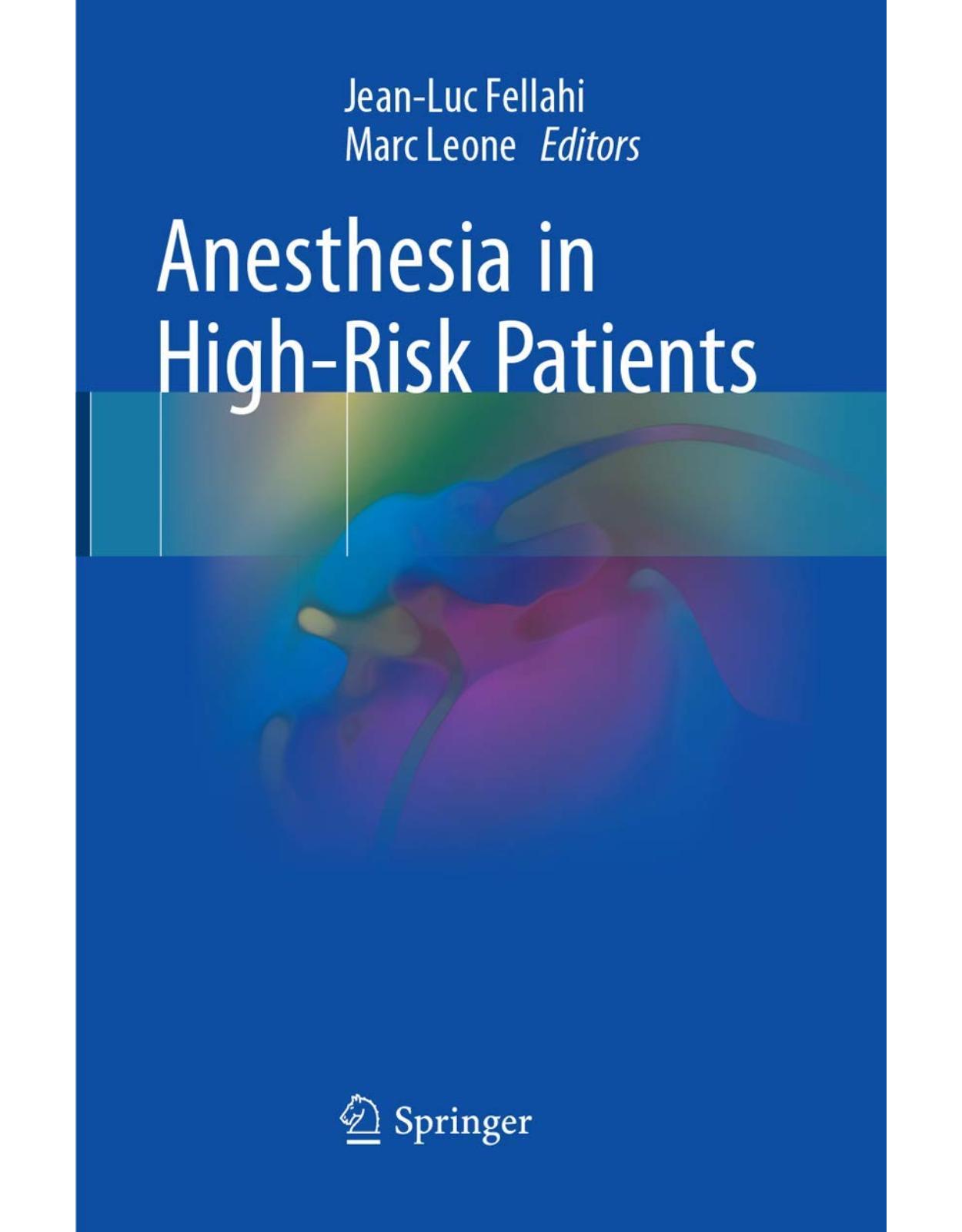
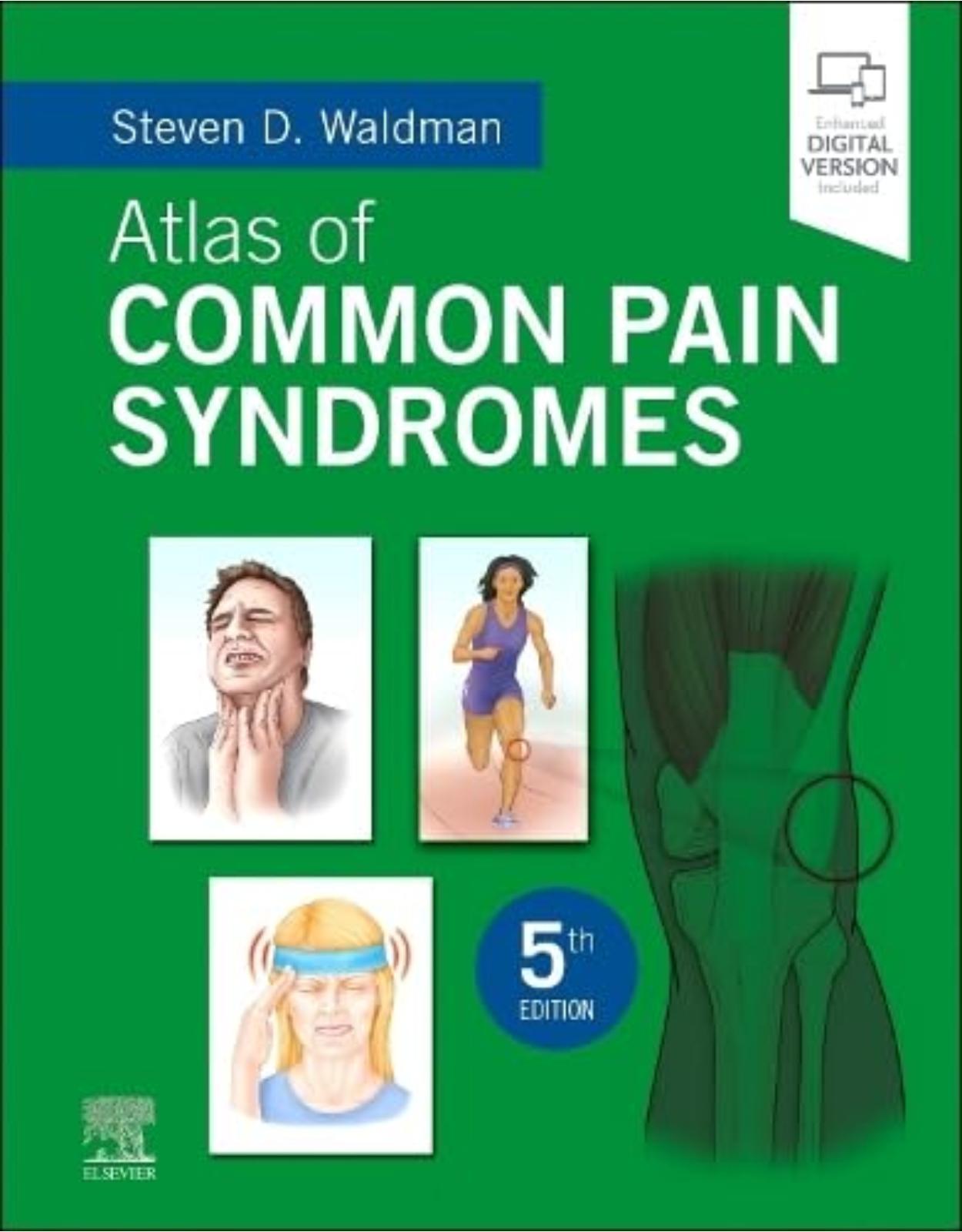
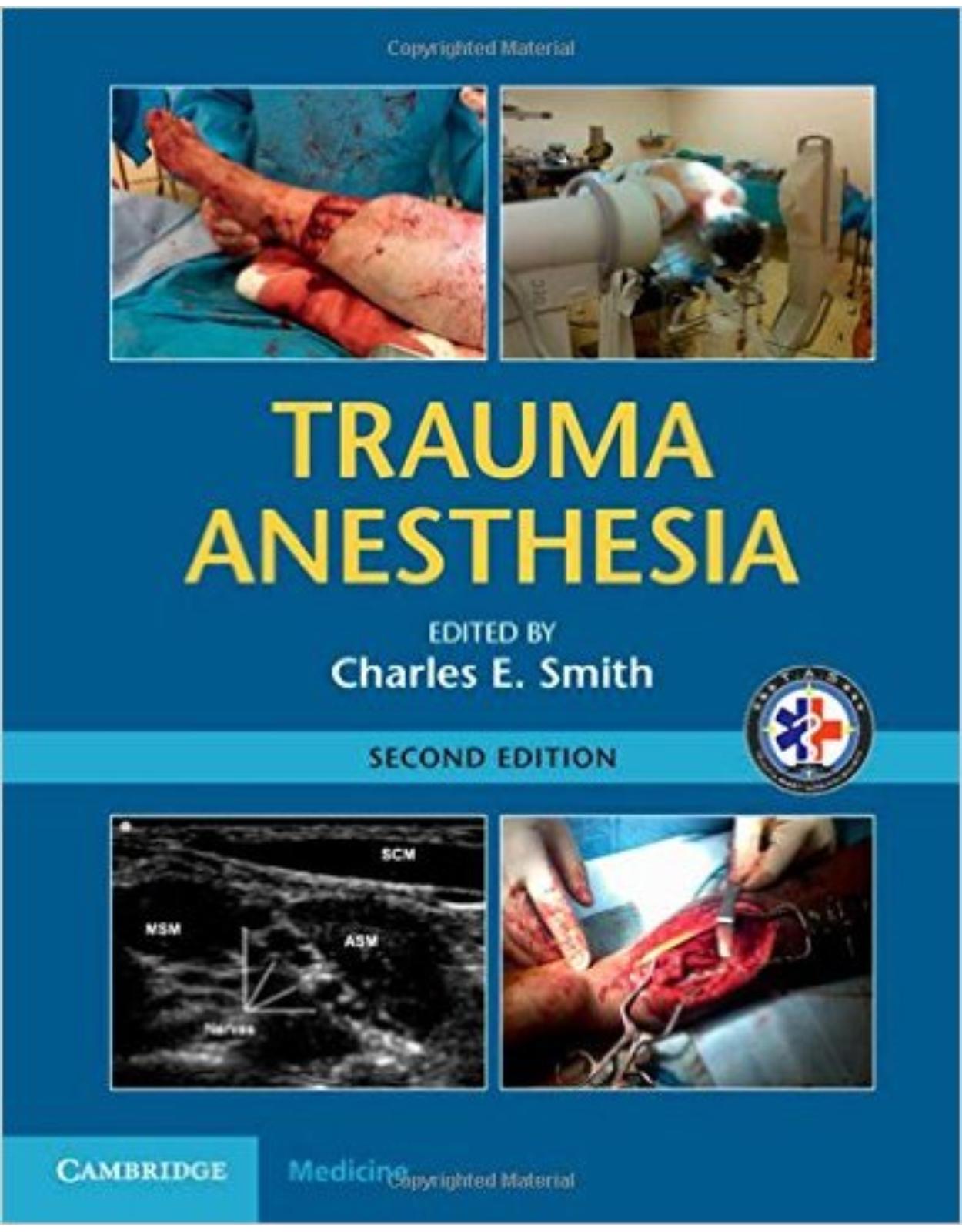
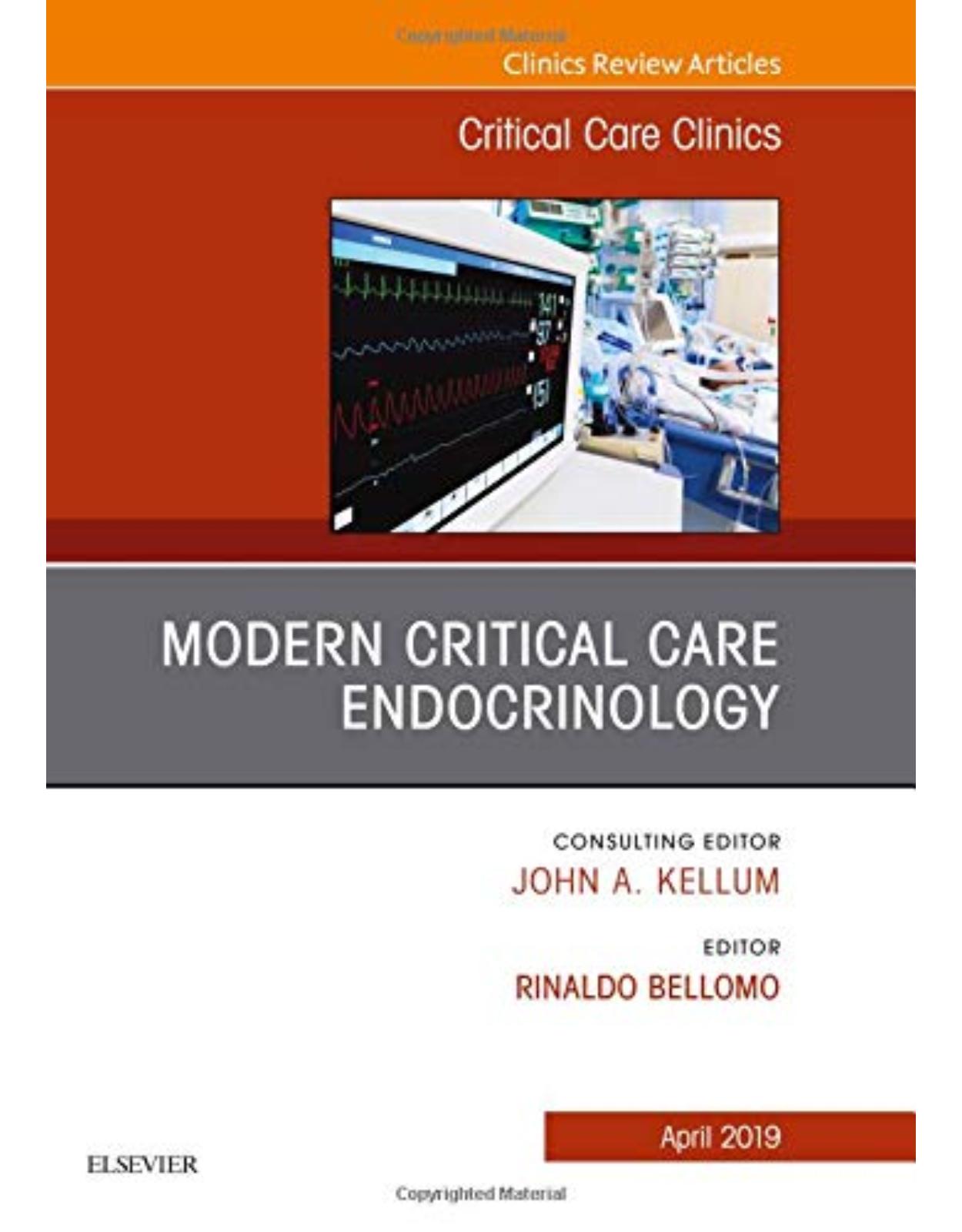
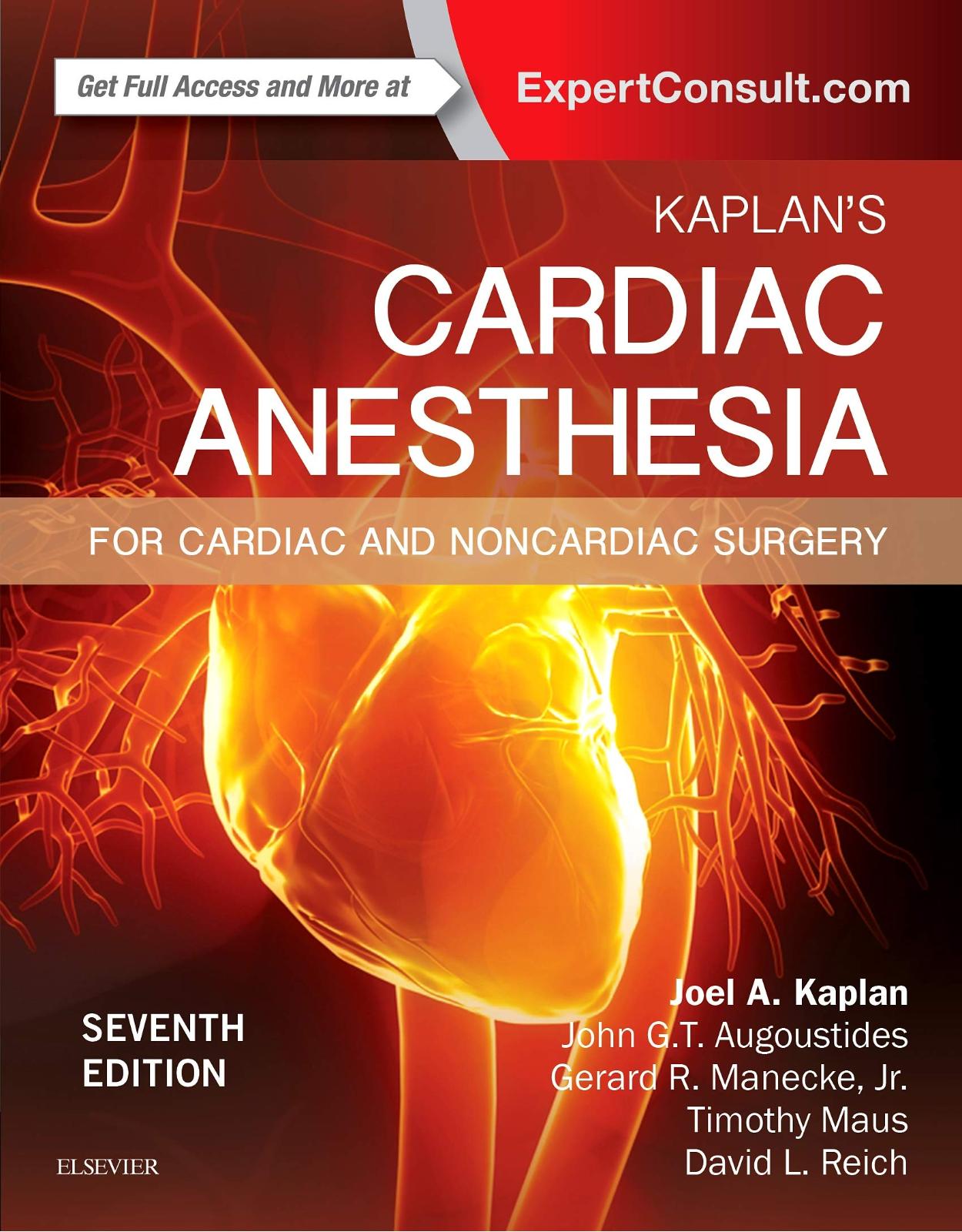
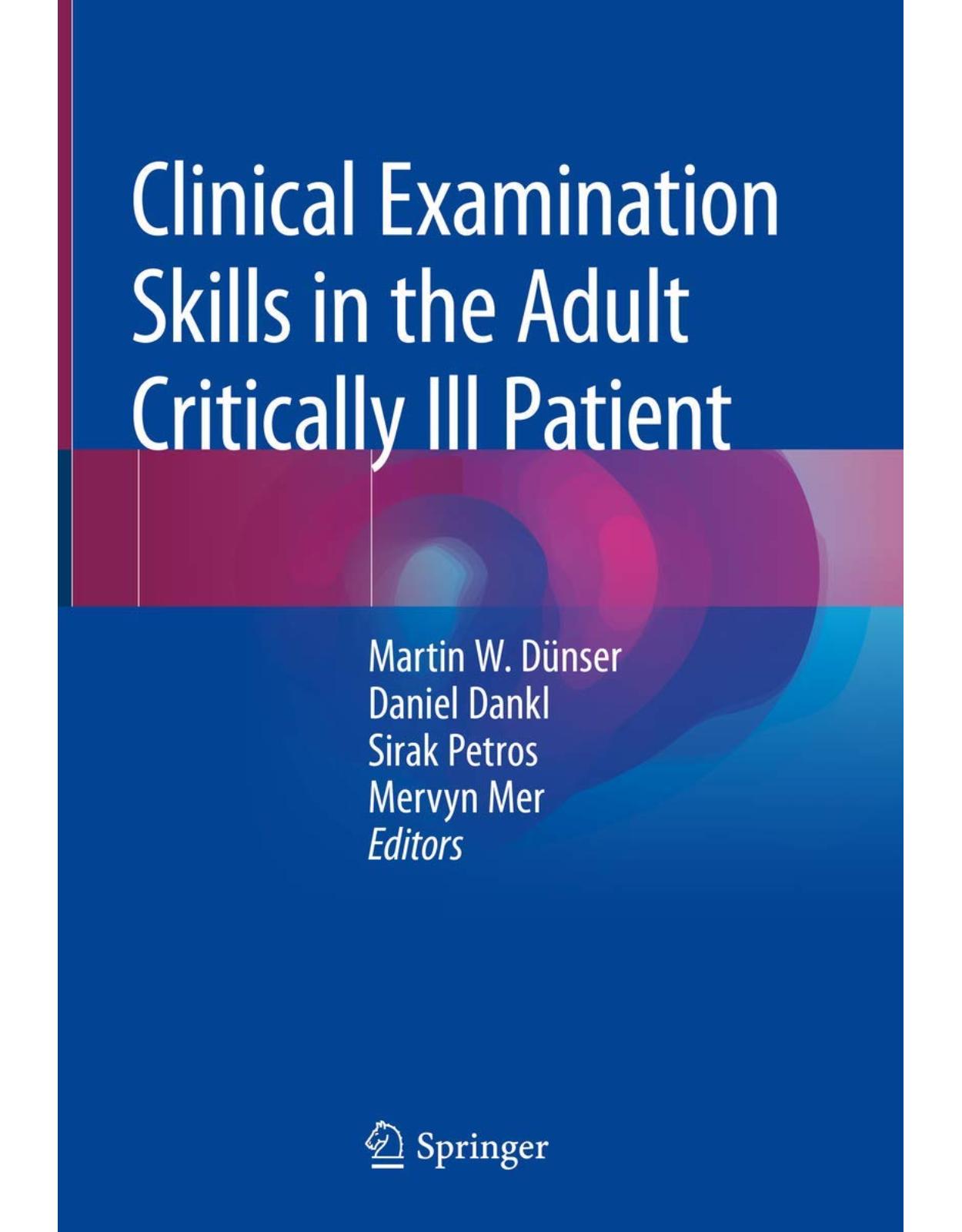
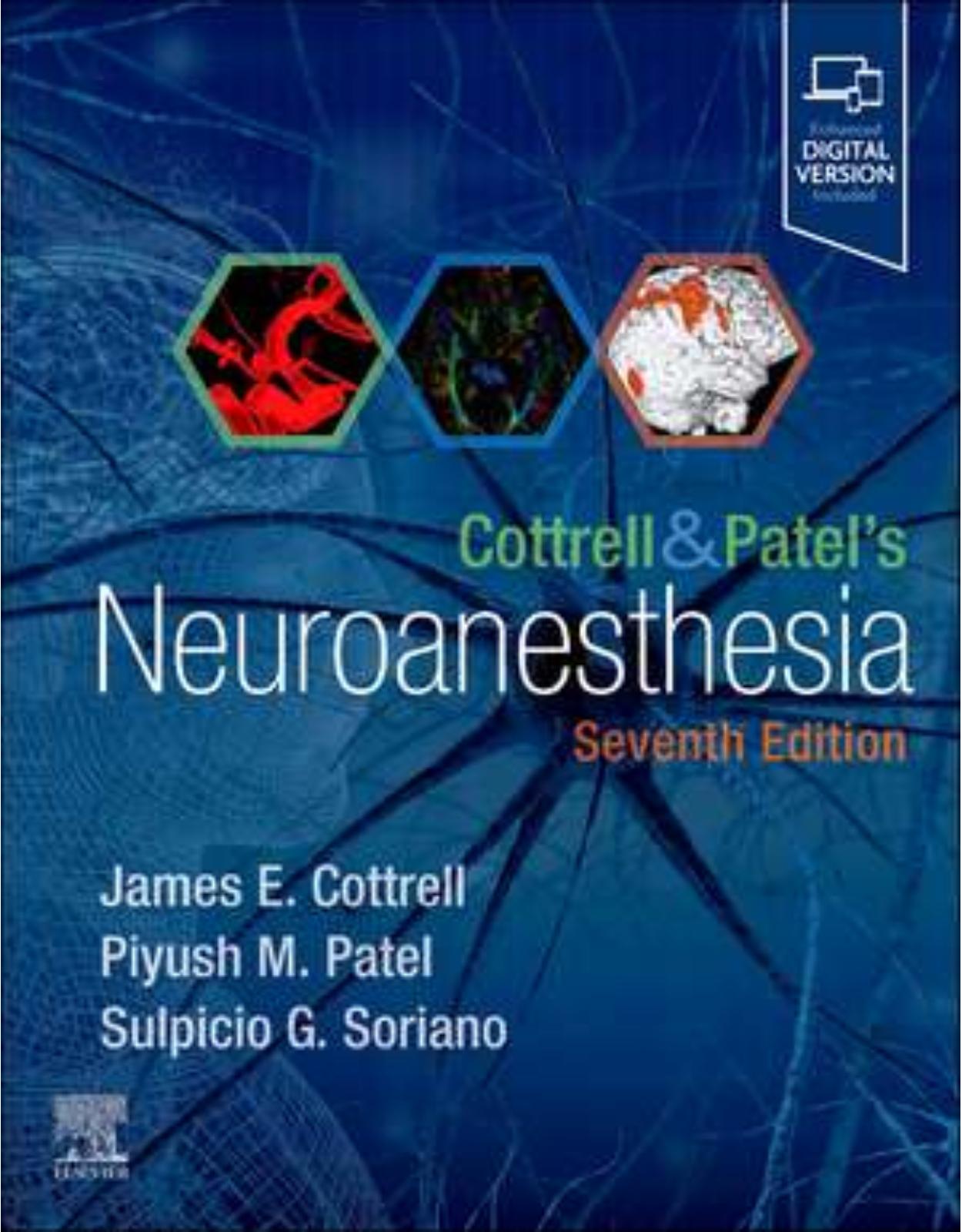
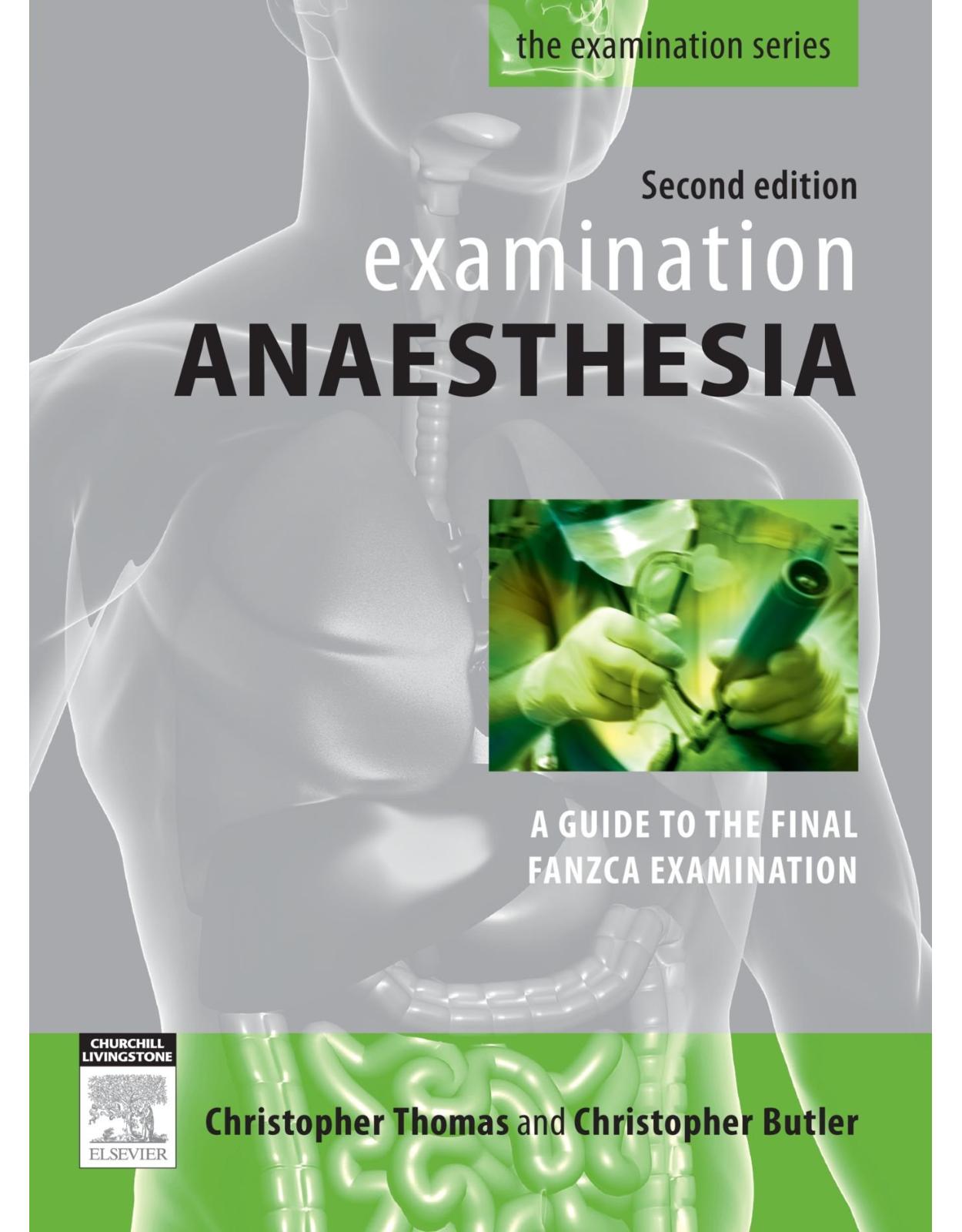
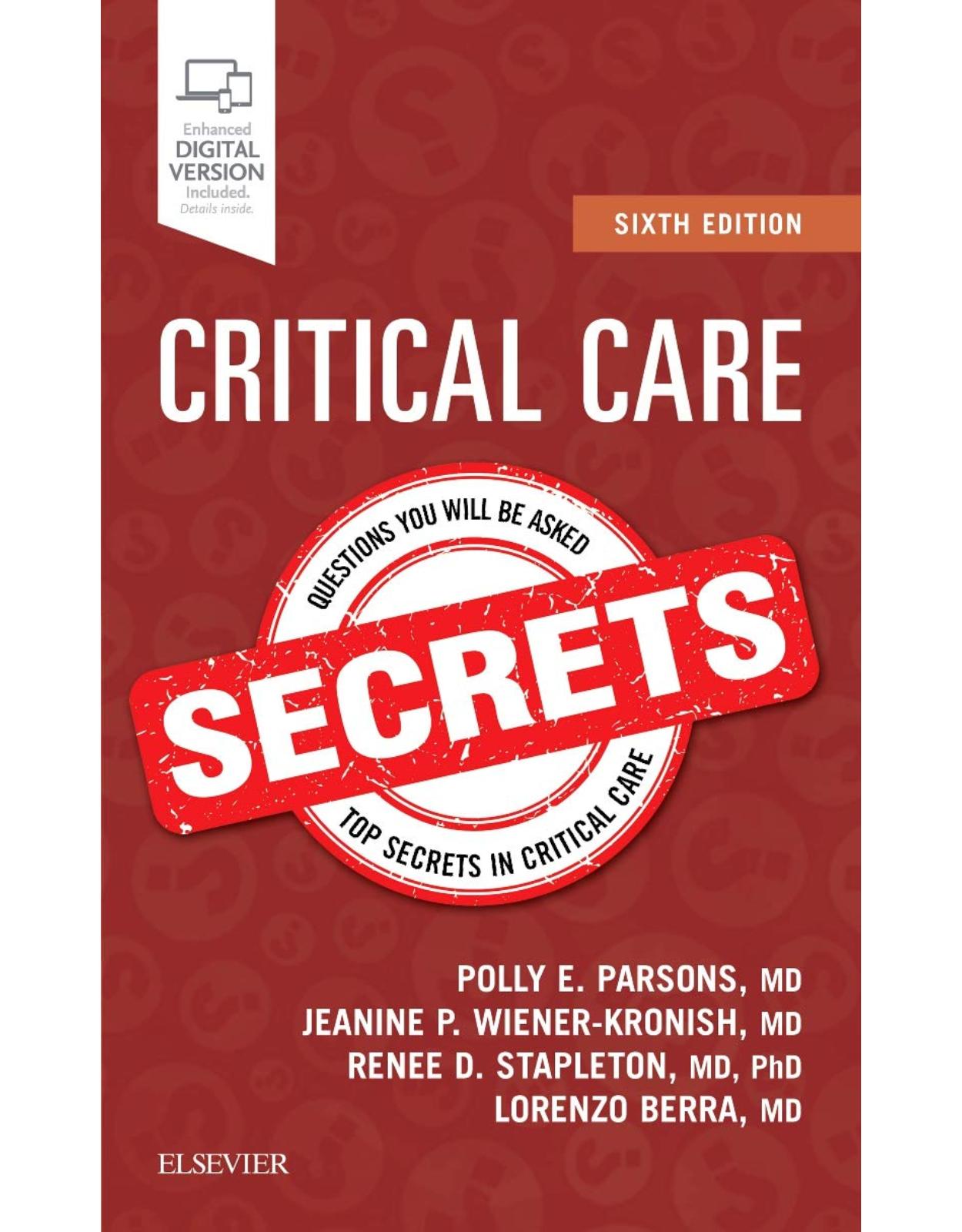
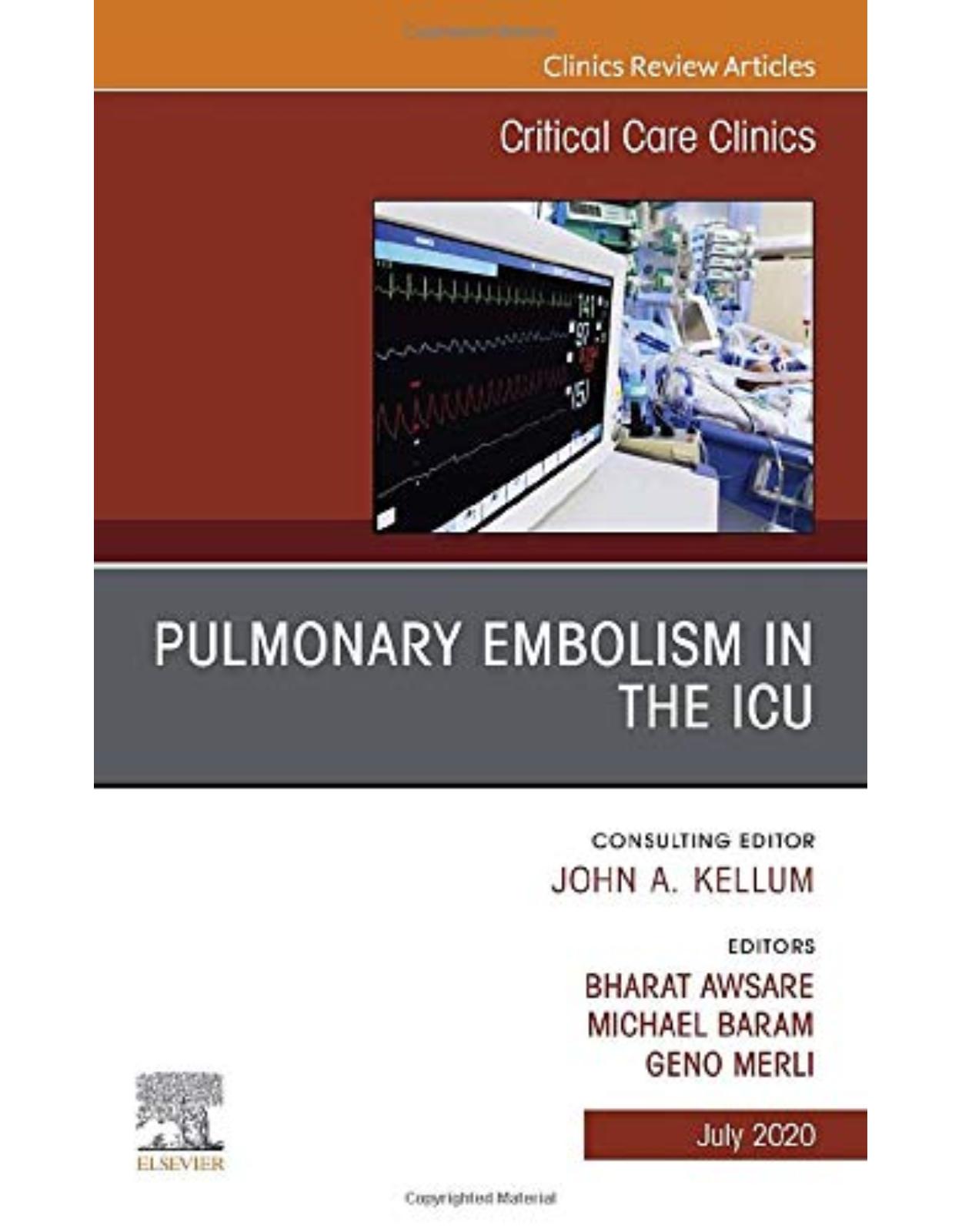
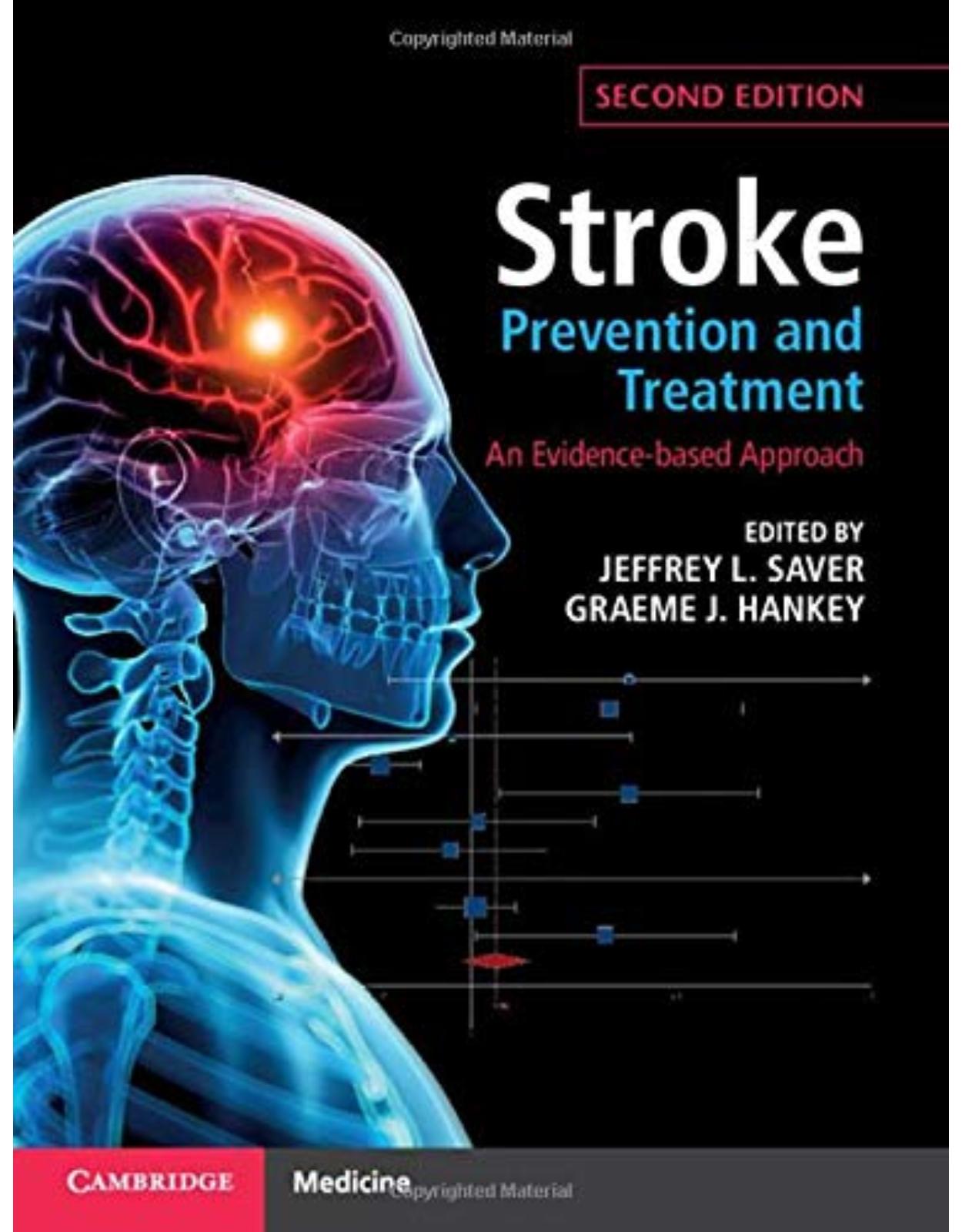

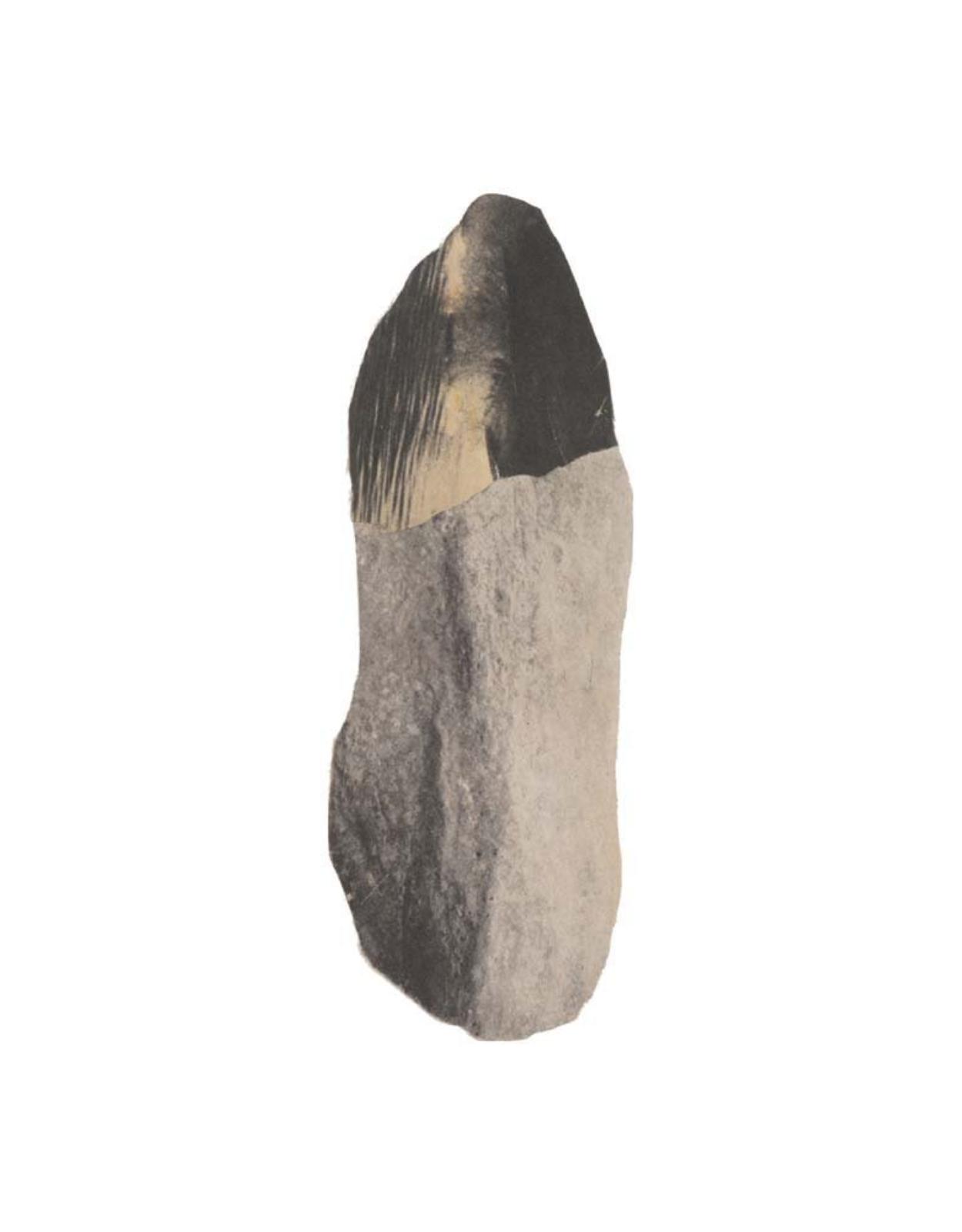

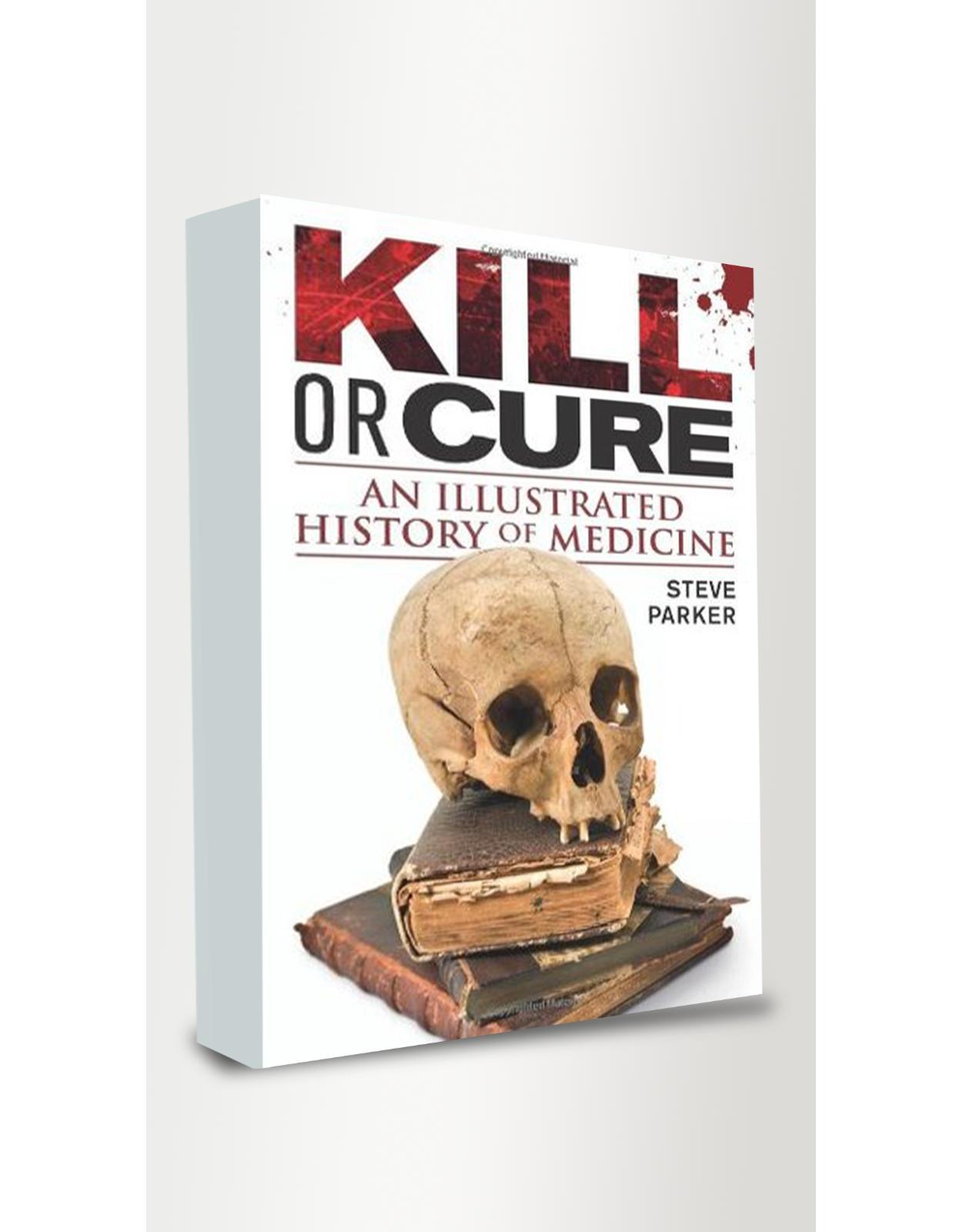
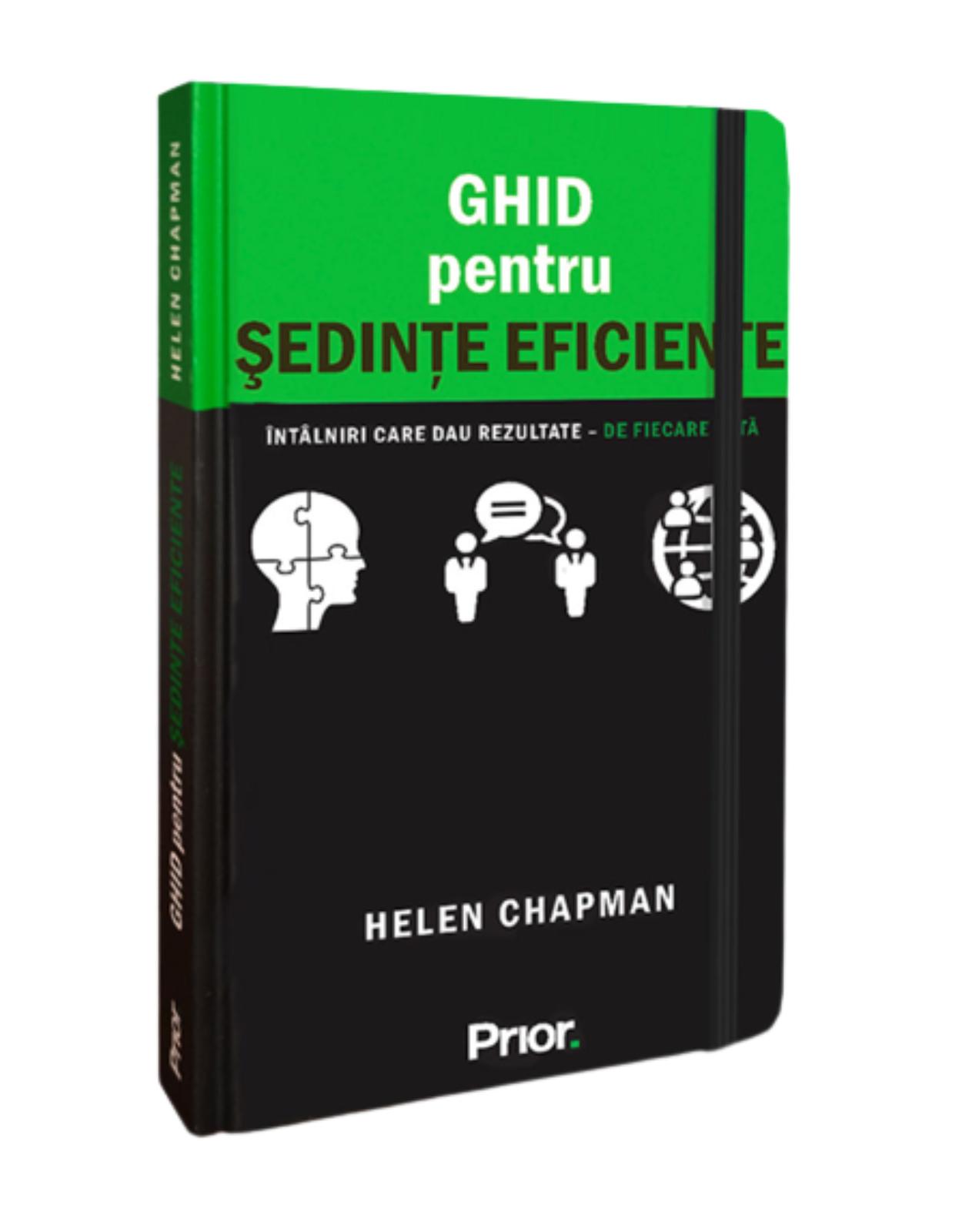

Clientii ebookshop.ro nu au adaugat inca opinii pentru acest produs. Fii primul care adauga o parere, folosind formularul de mai jos.